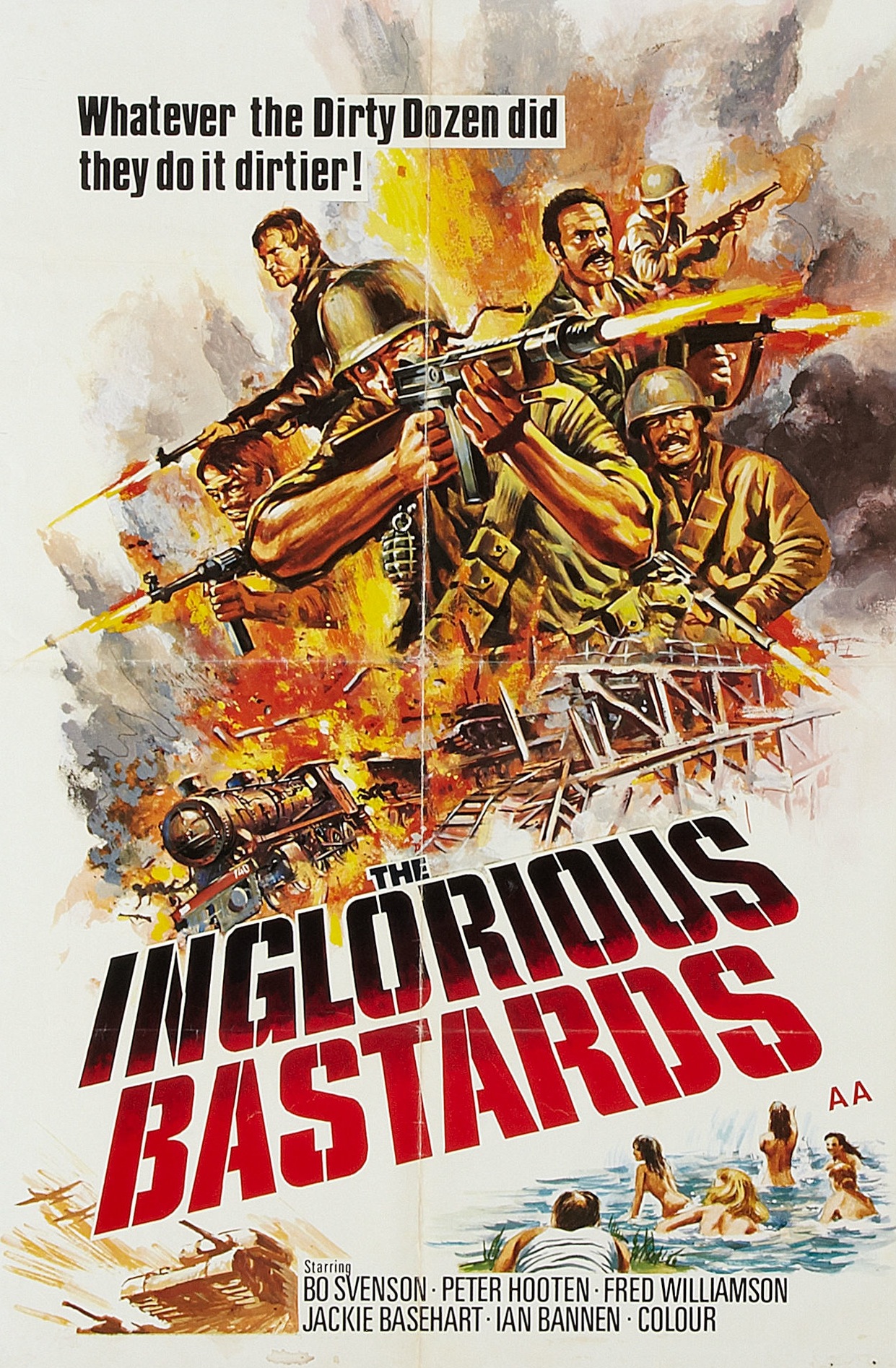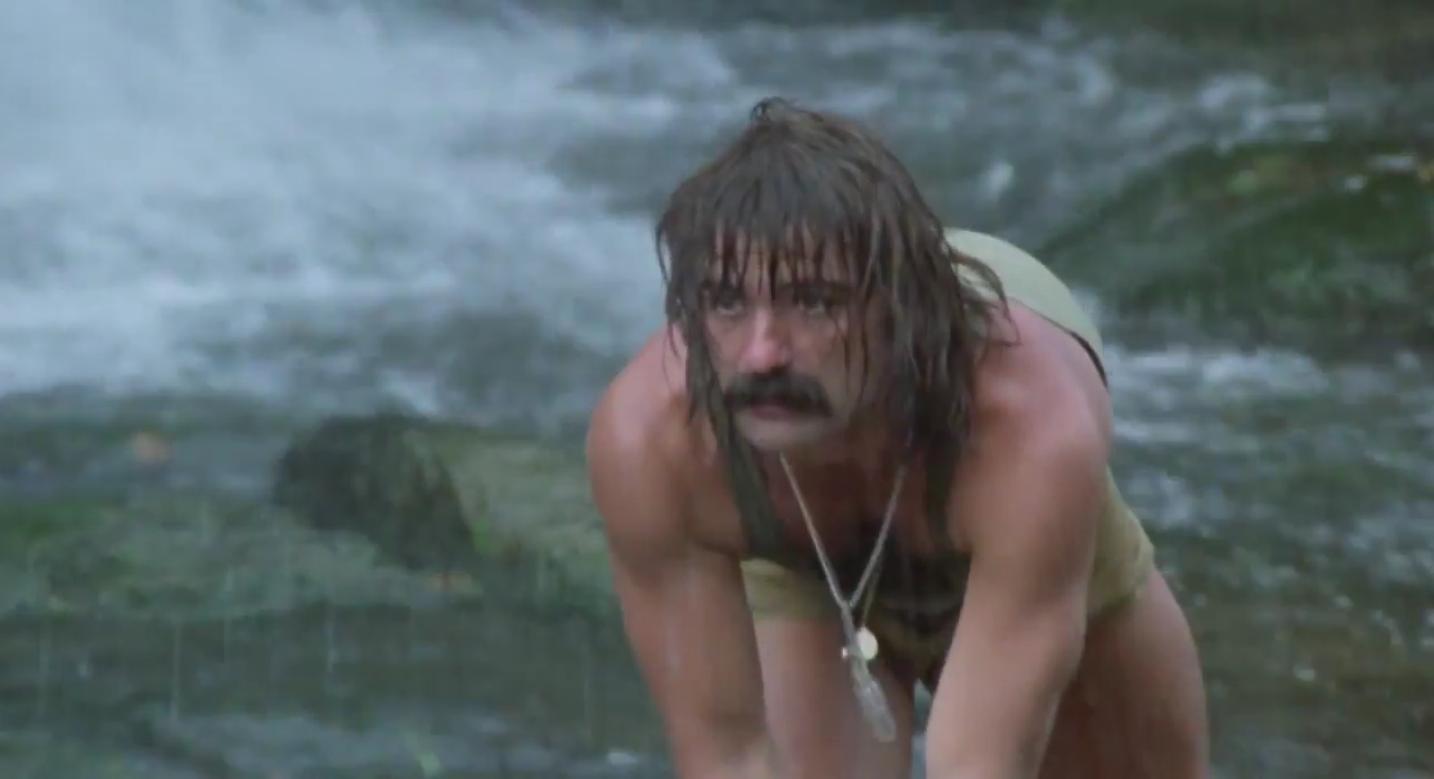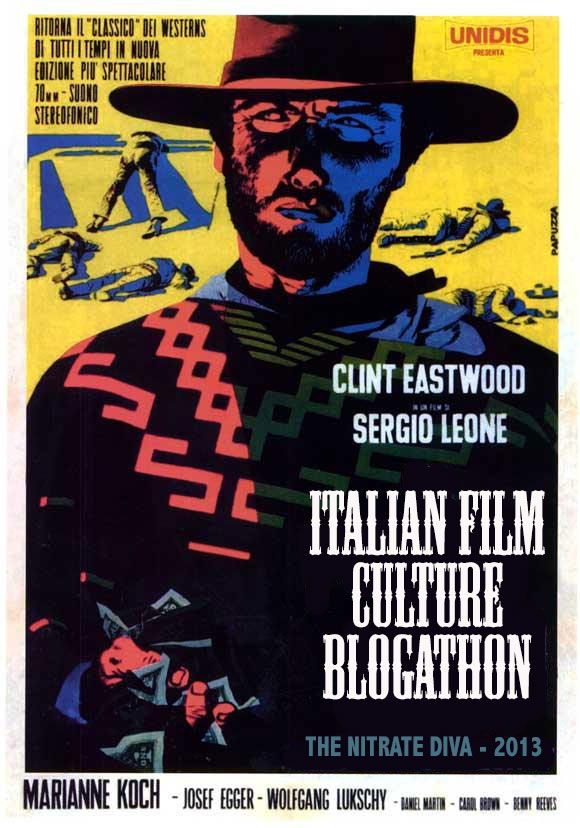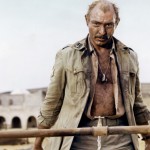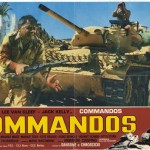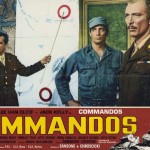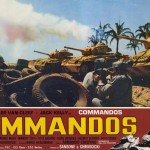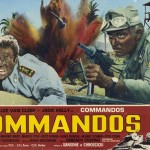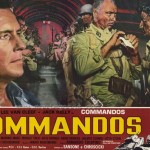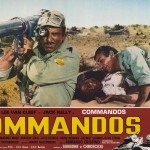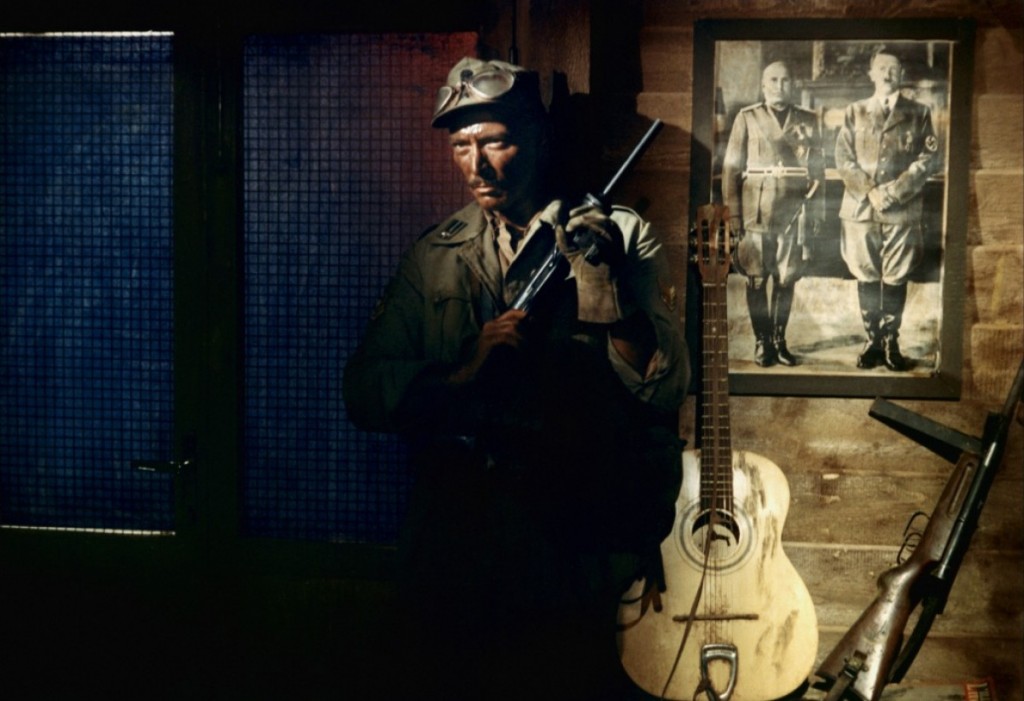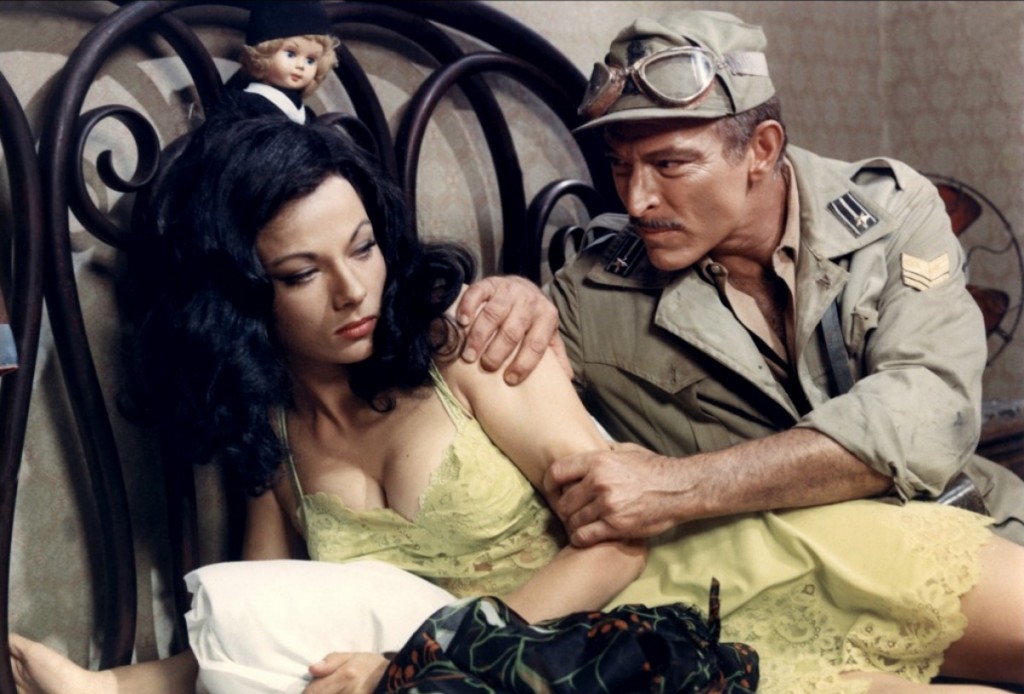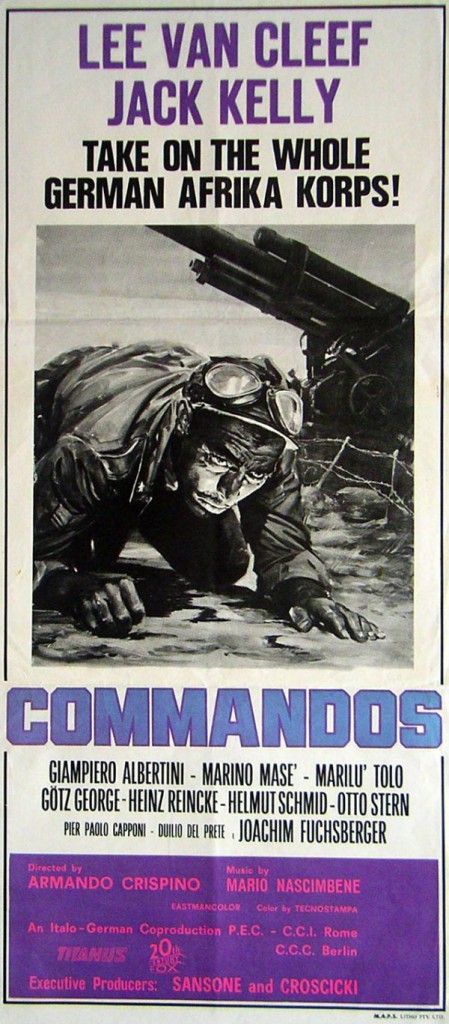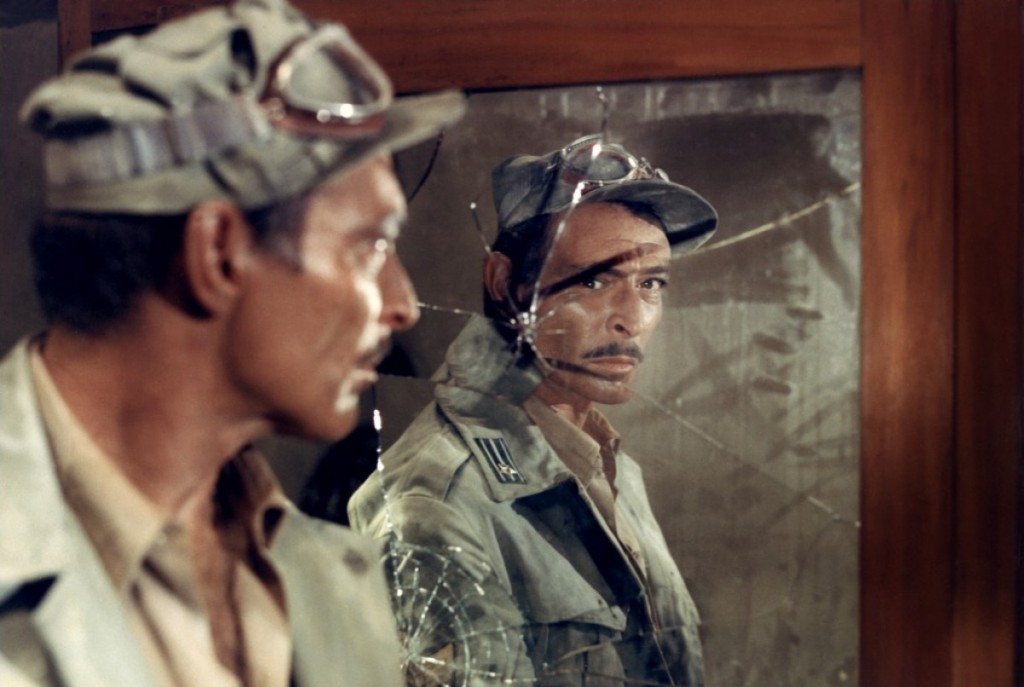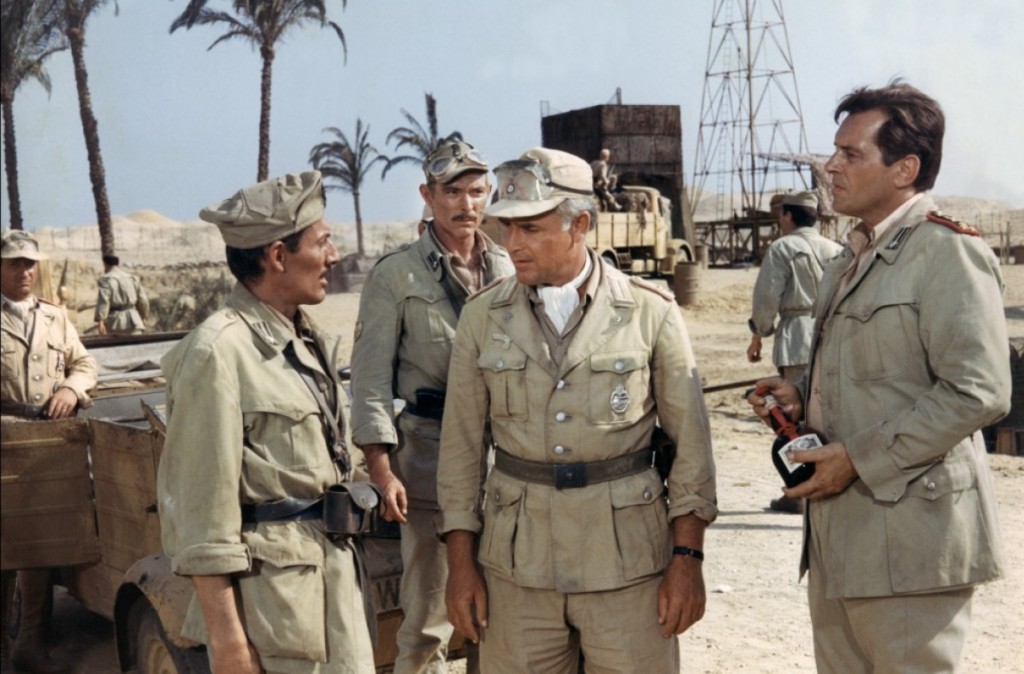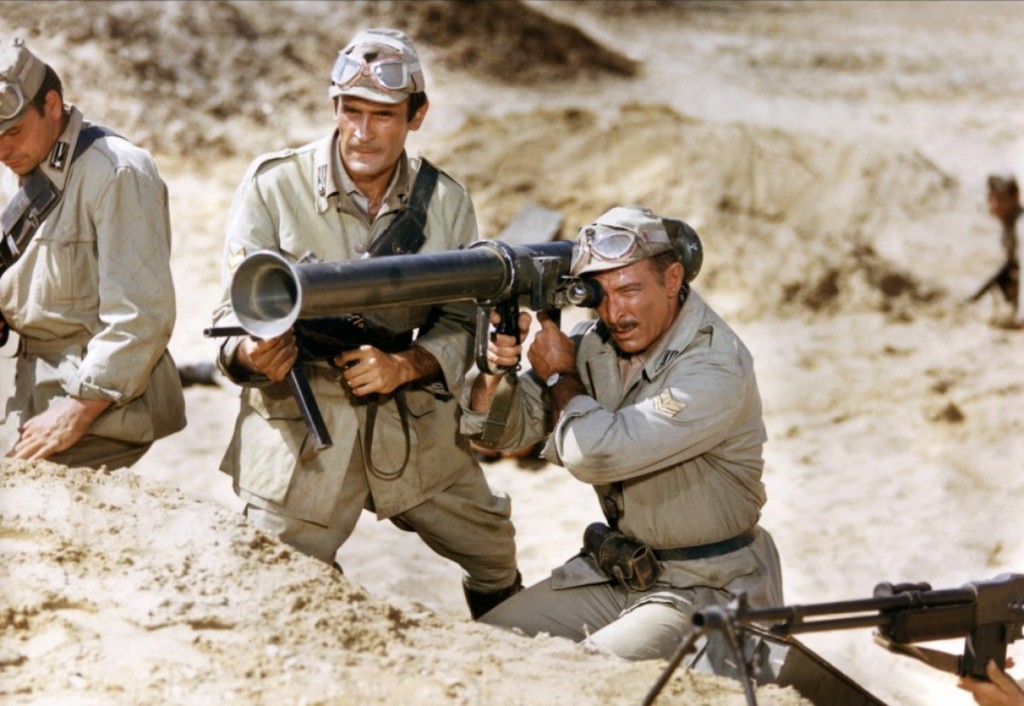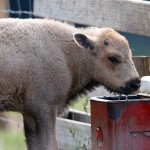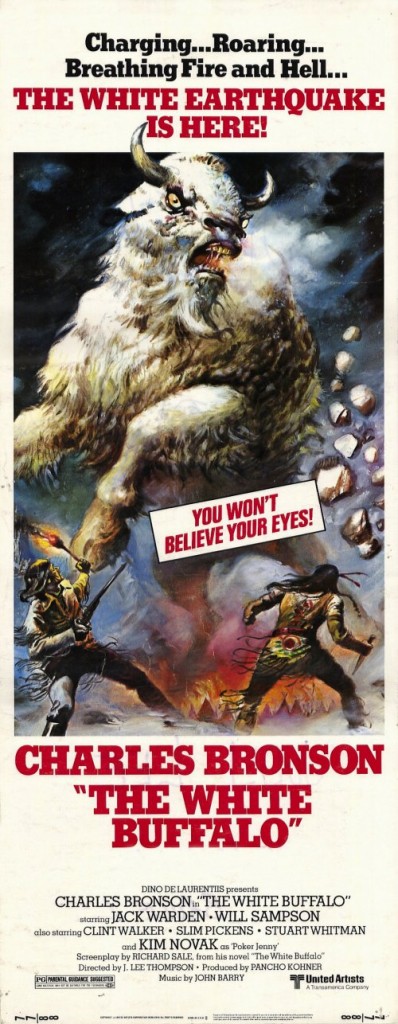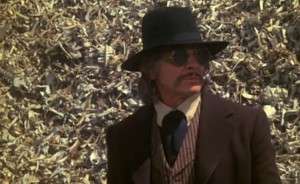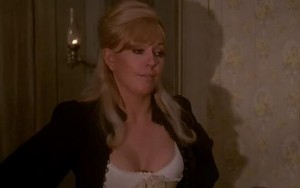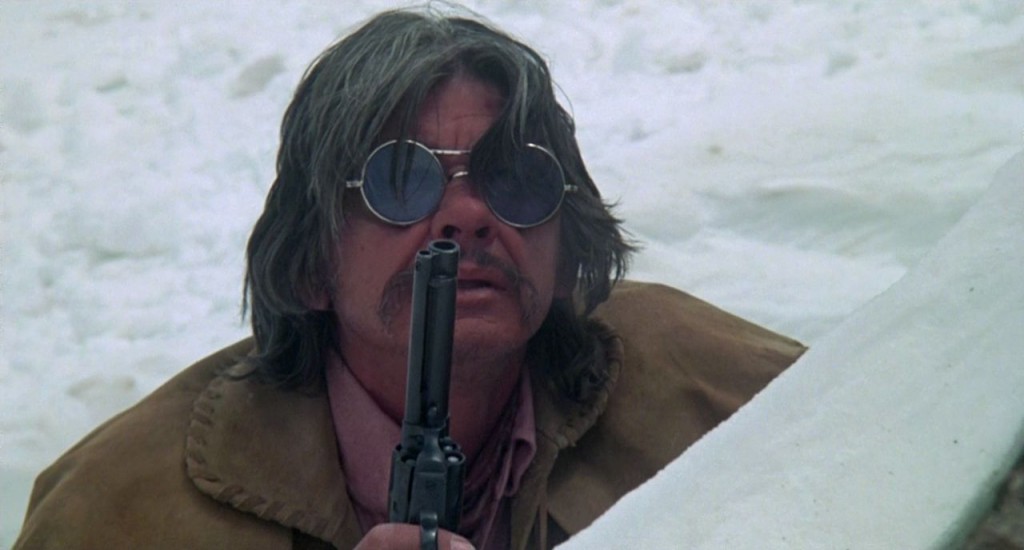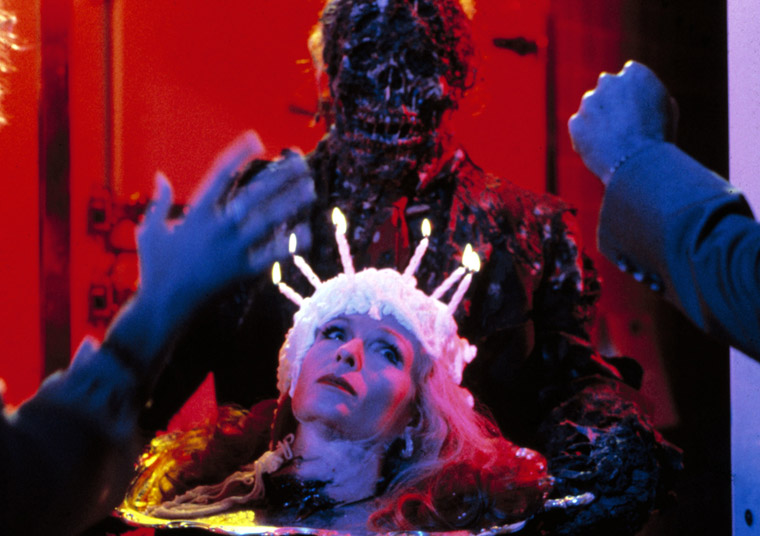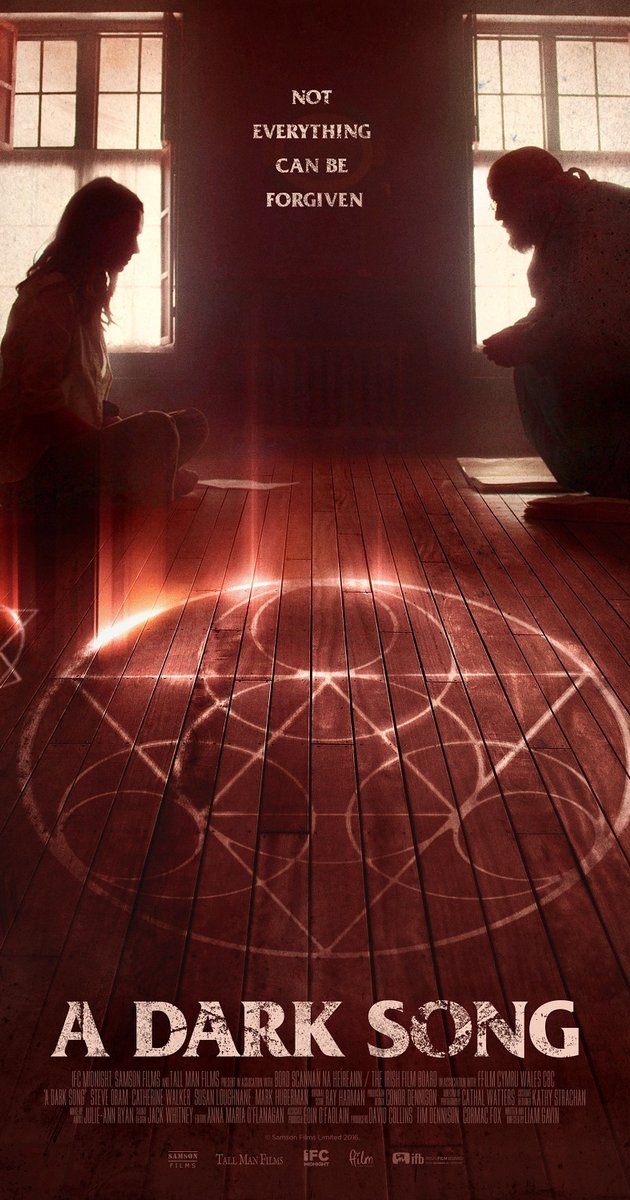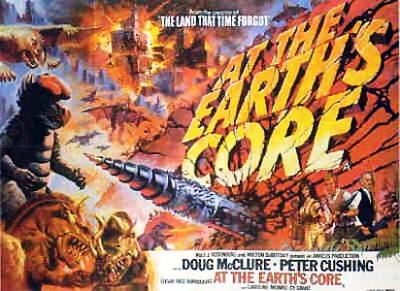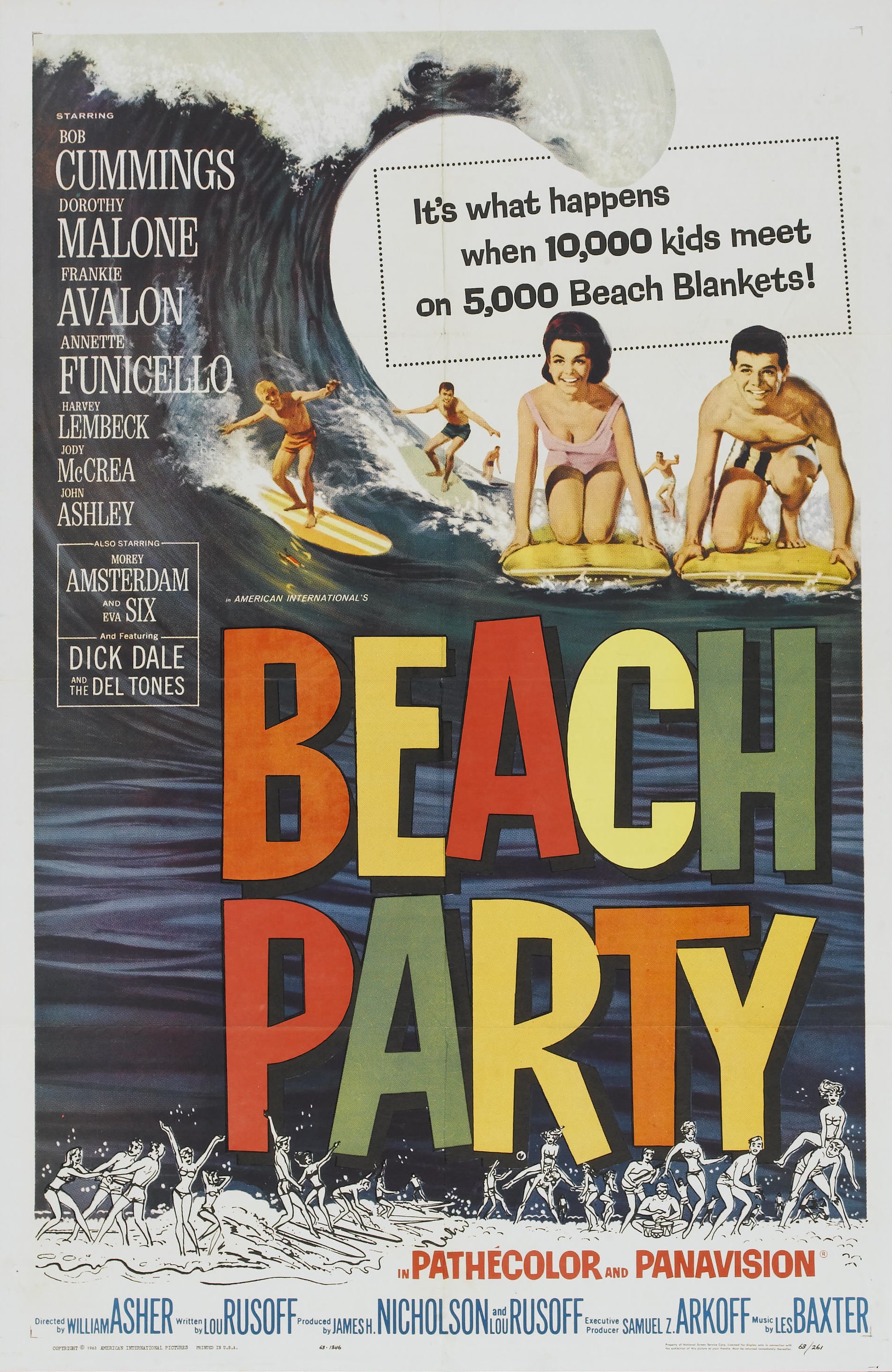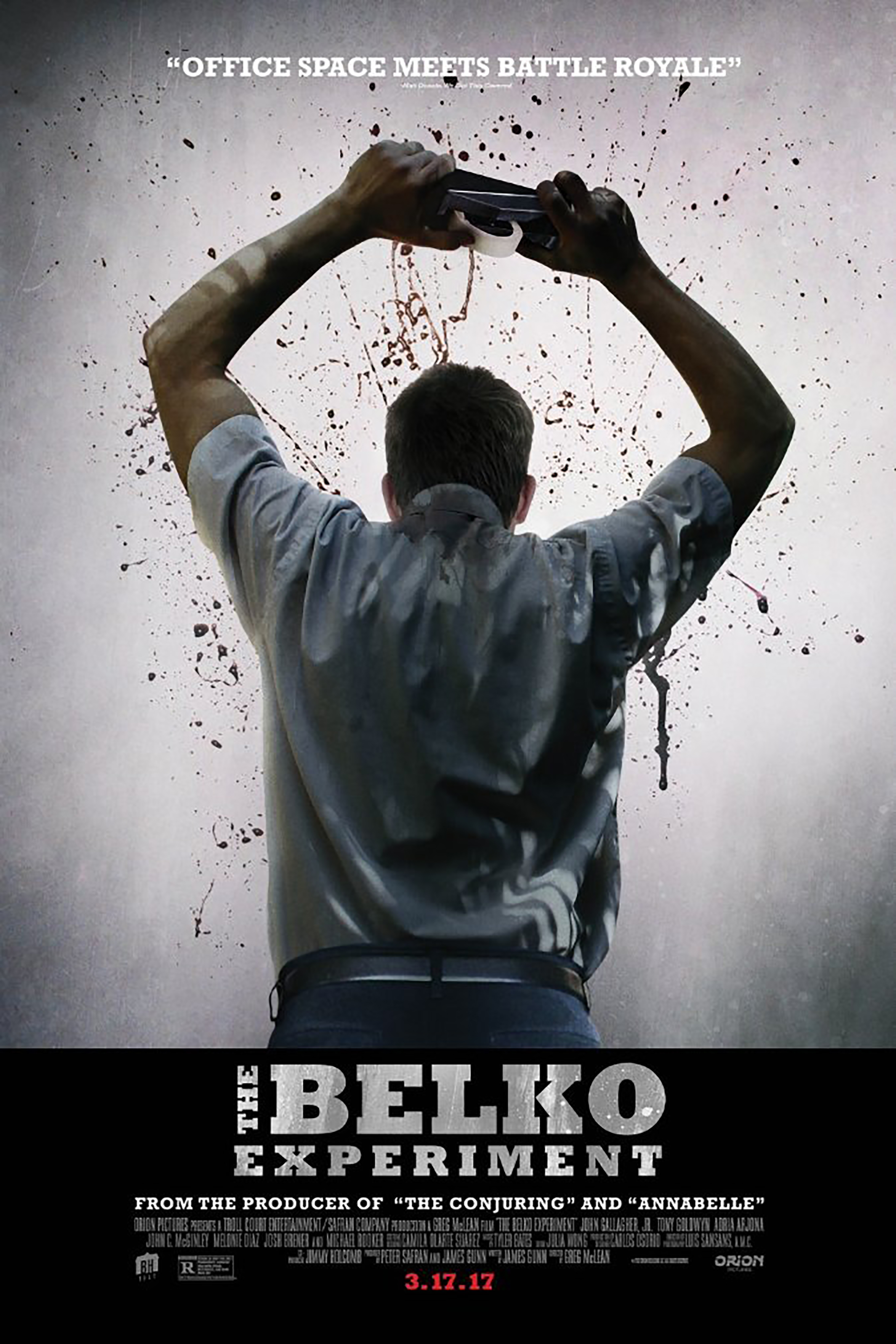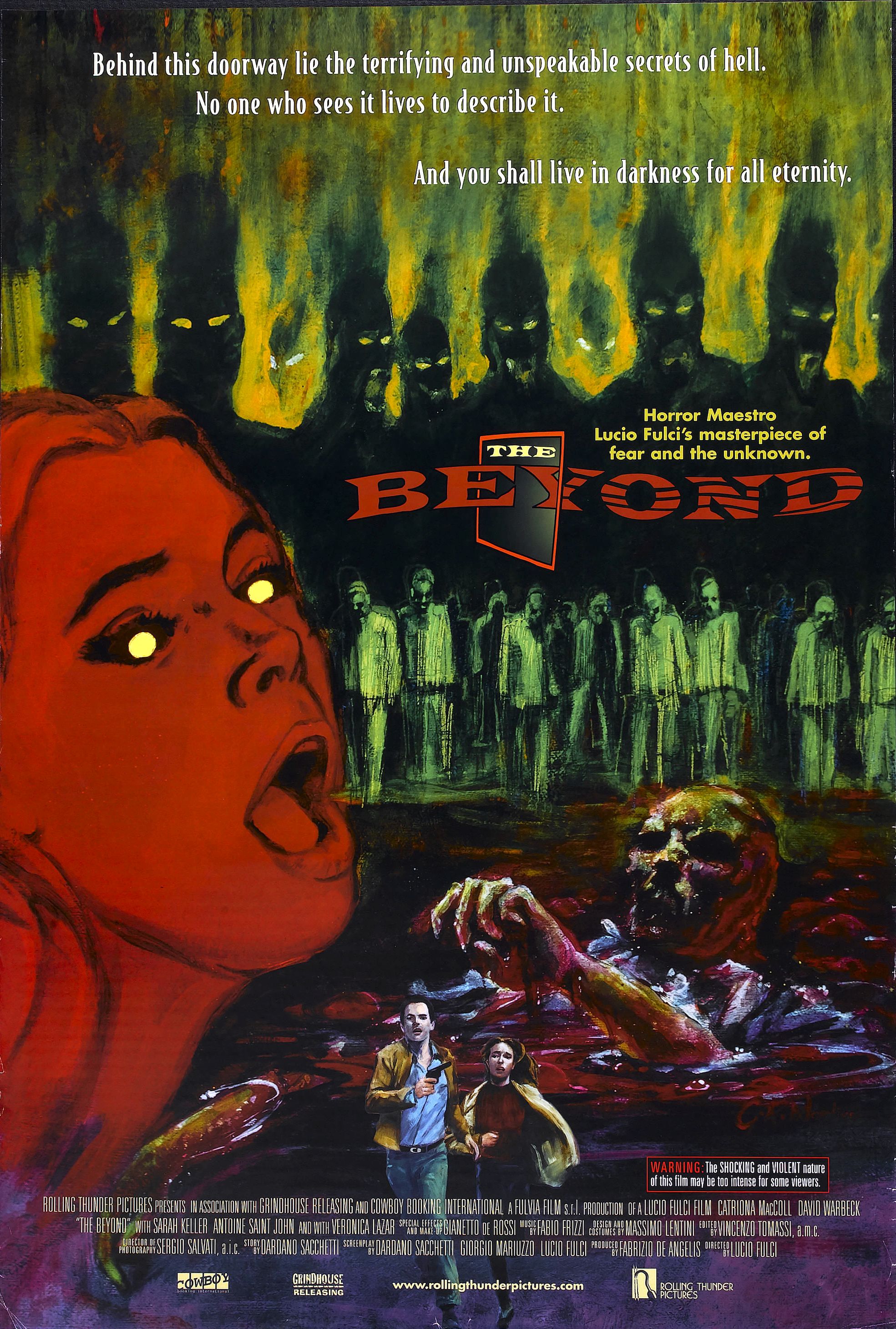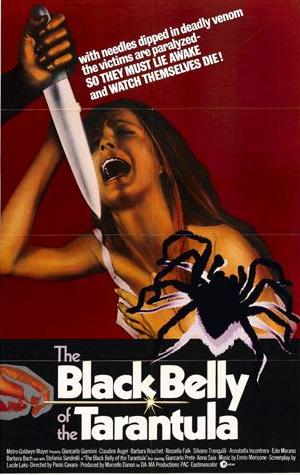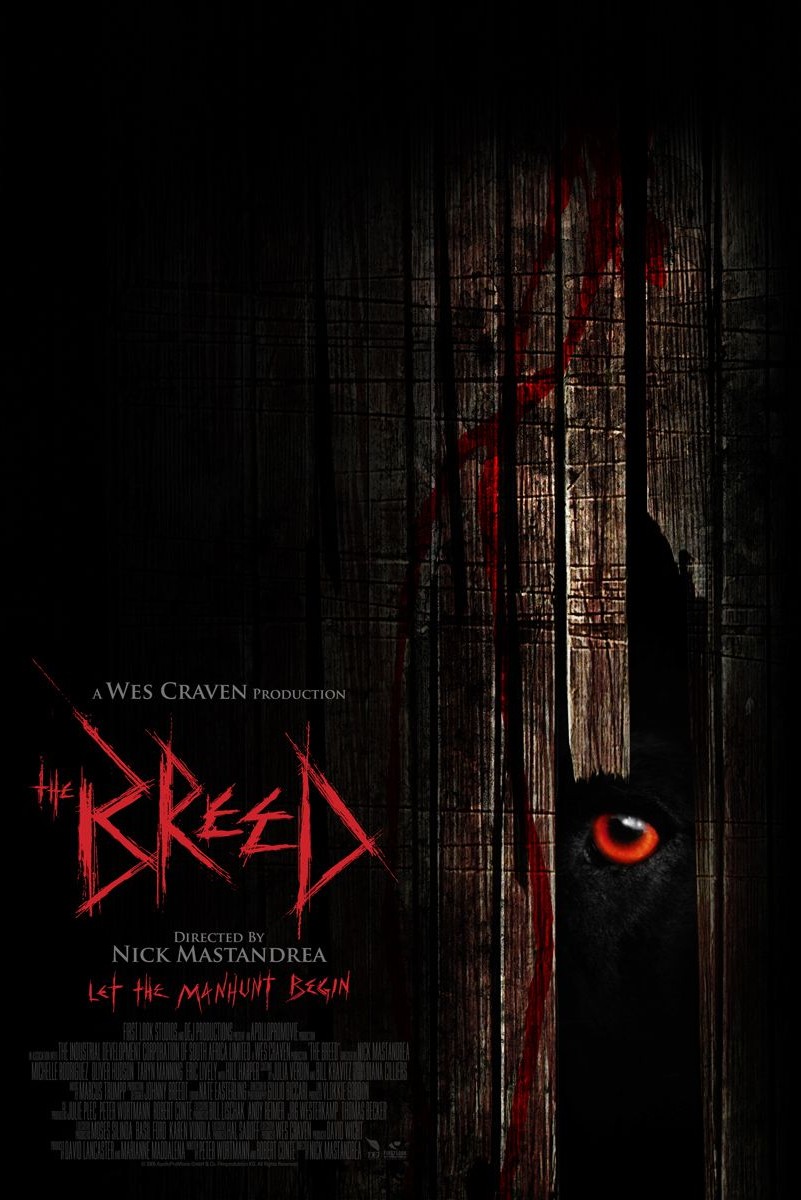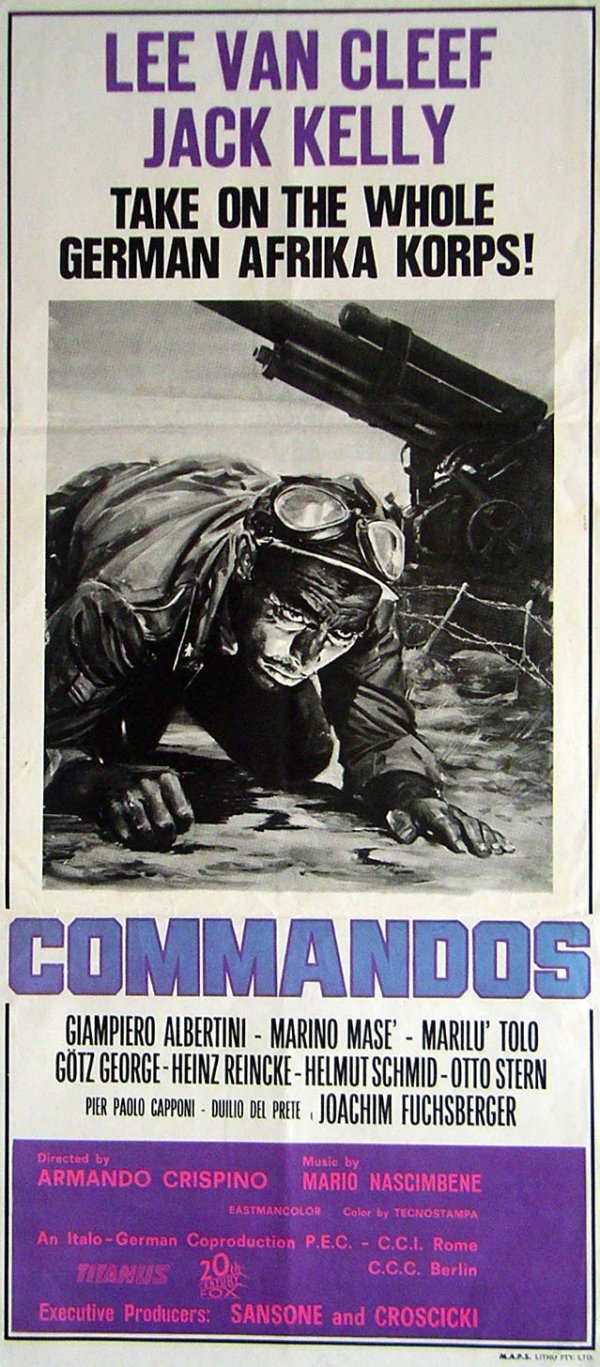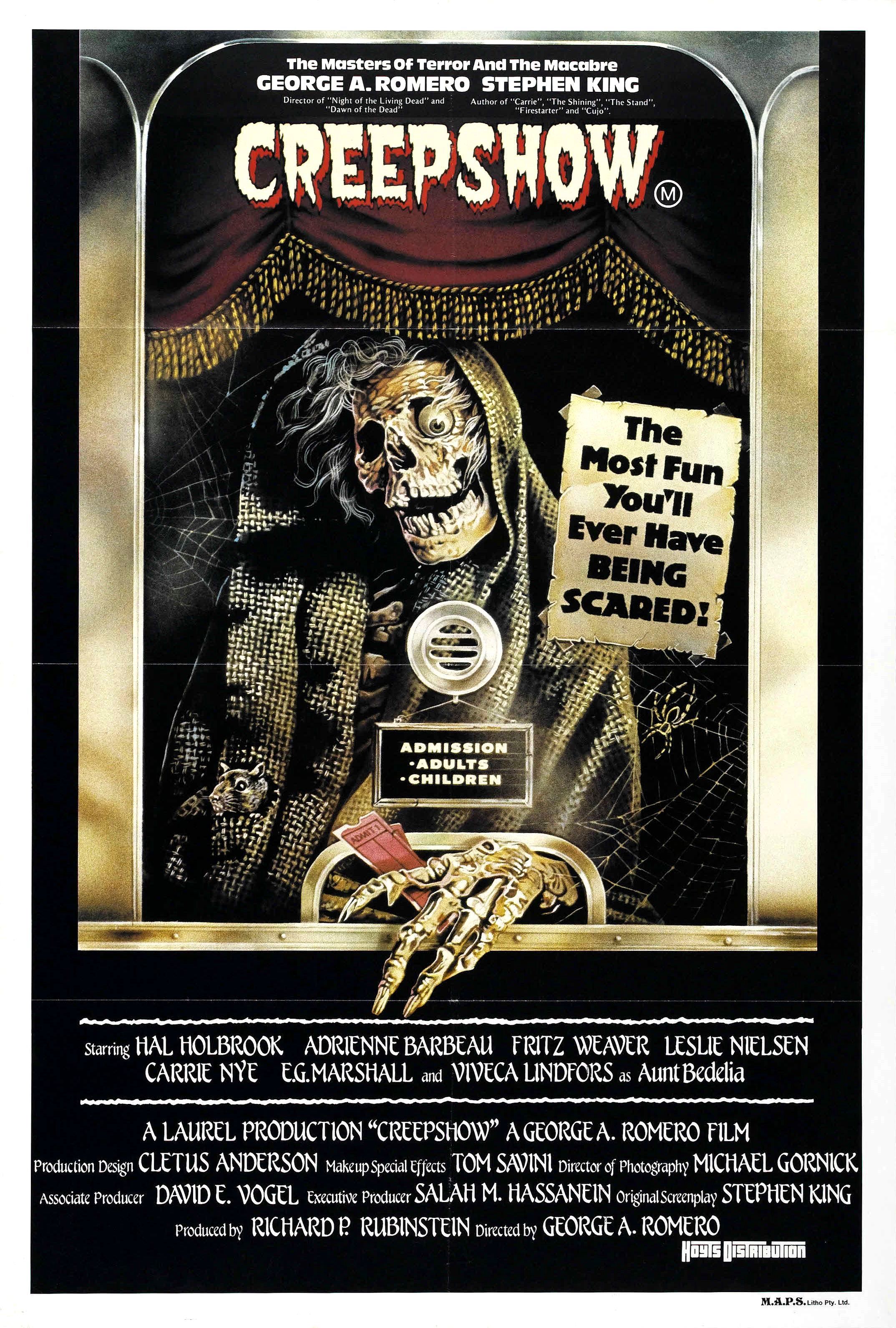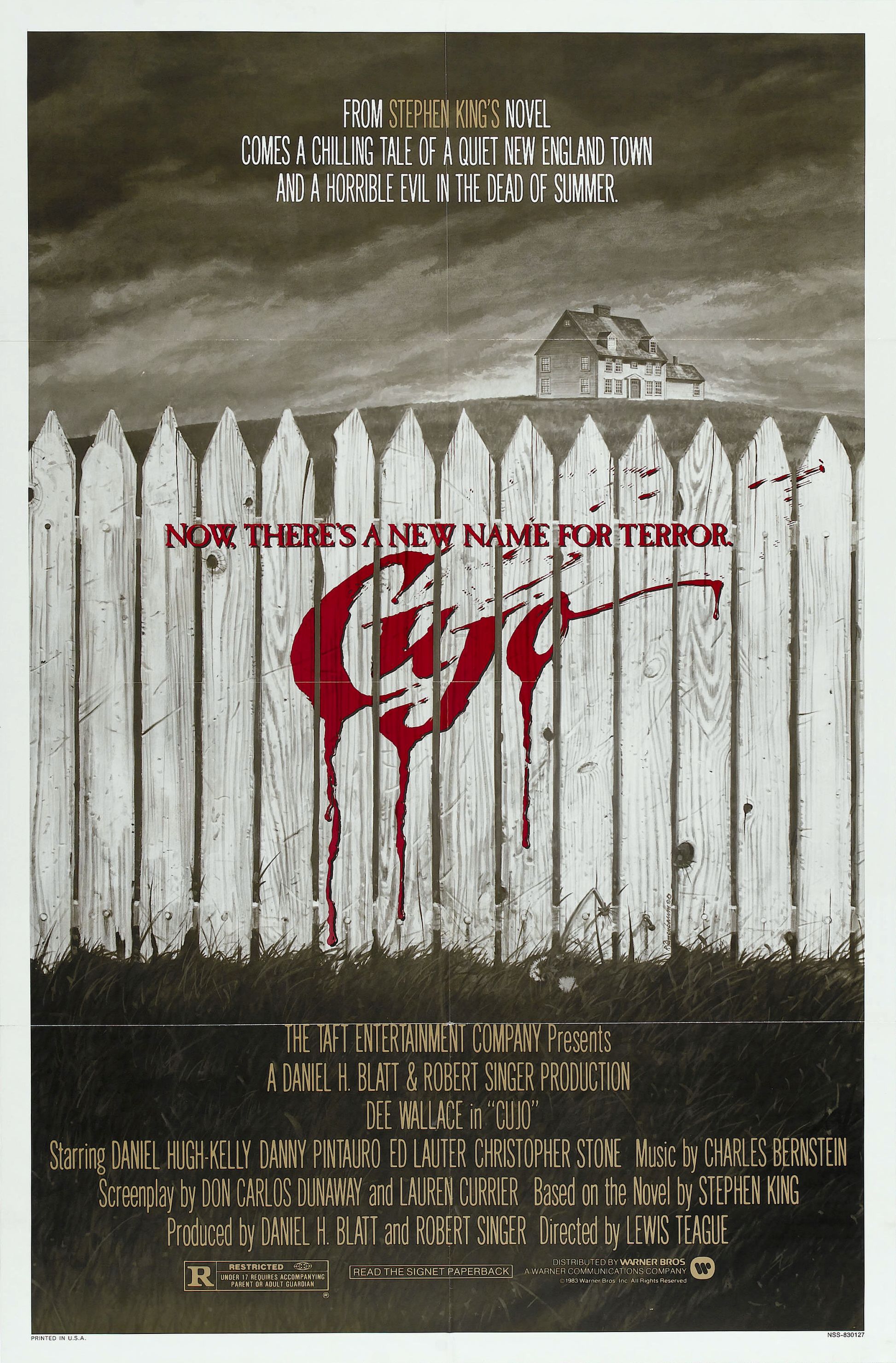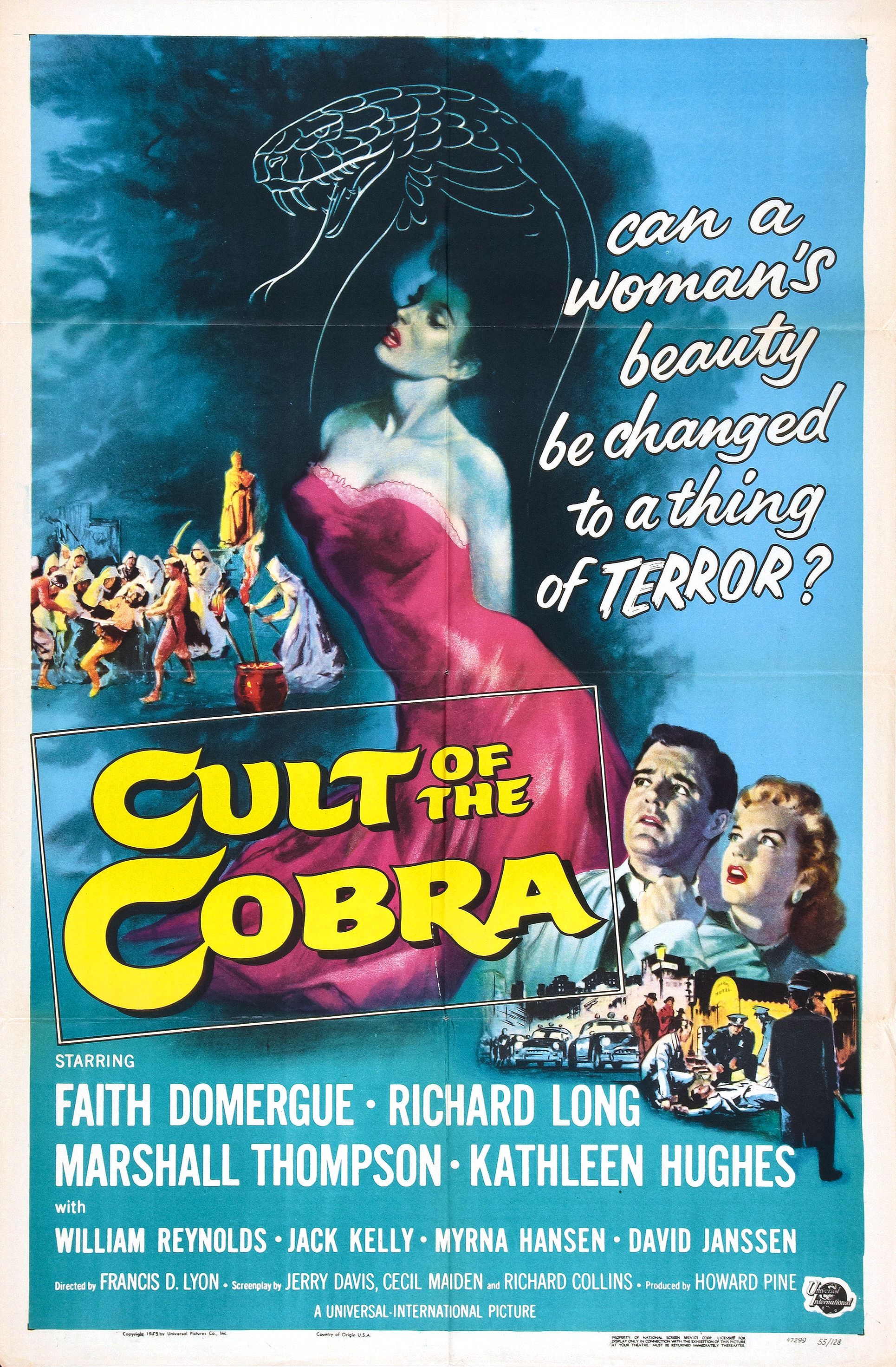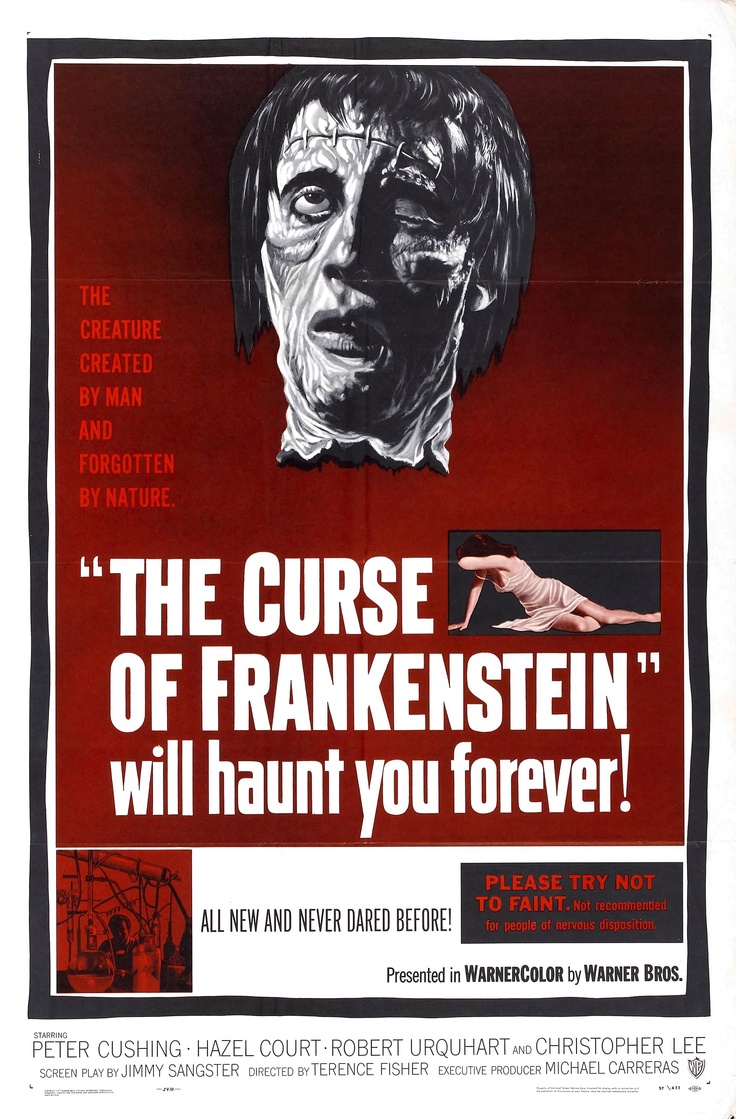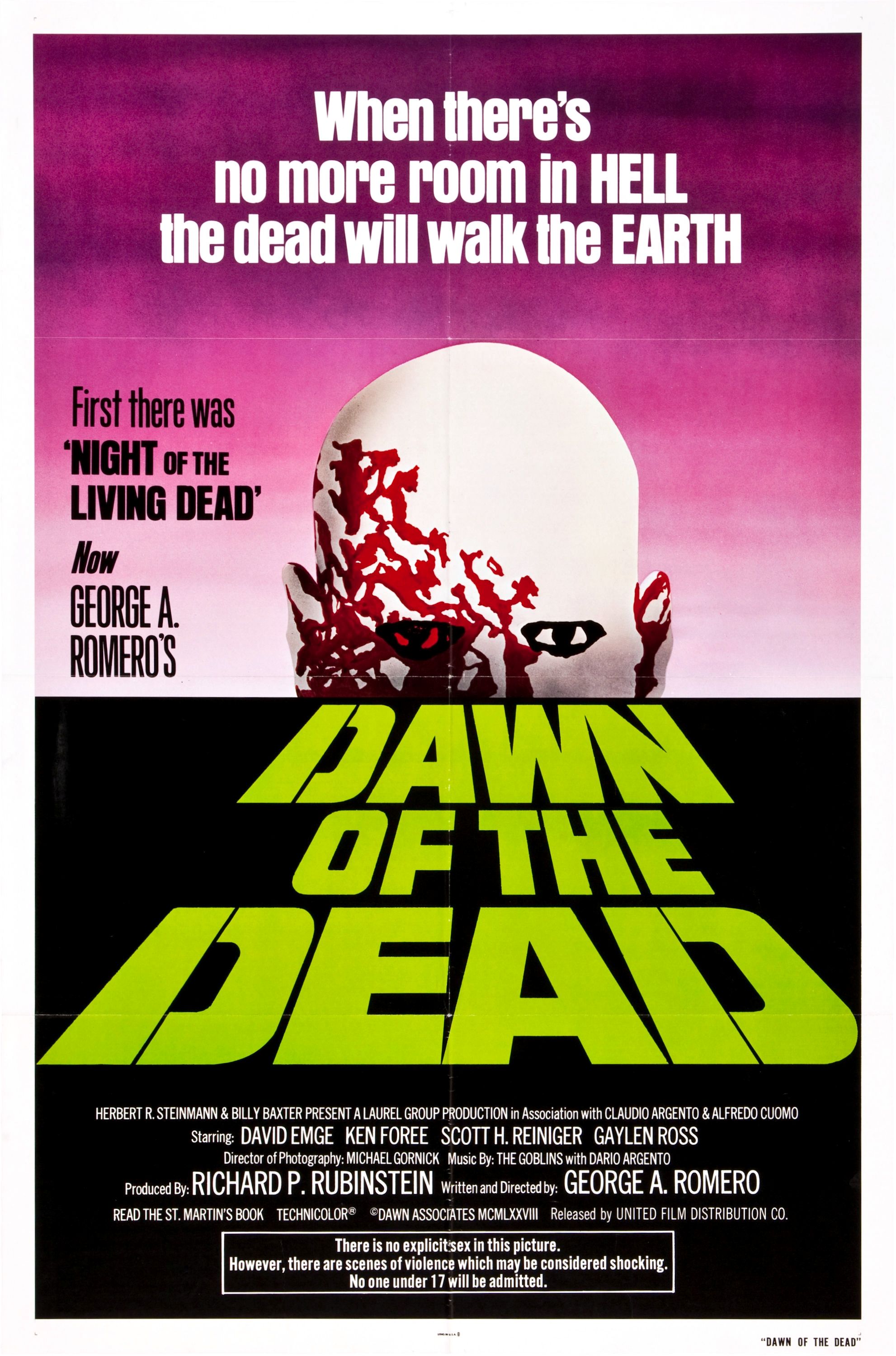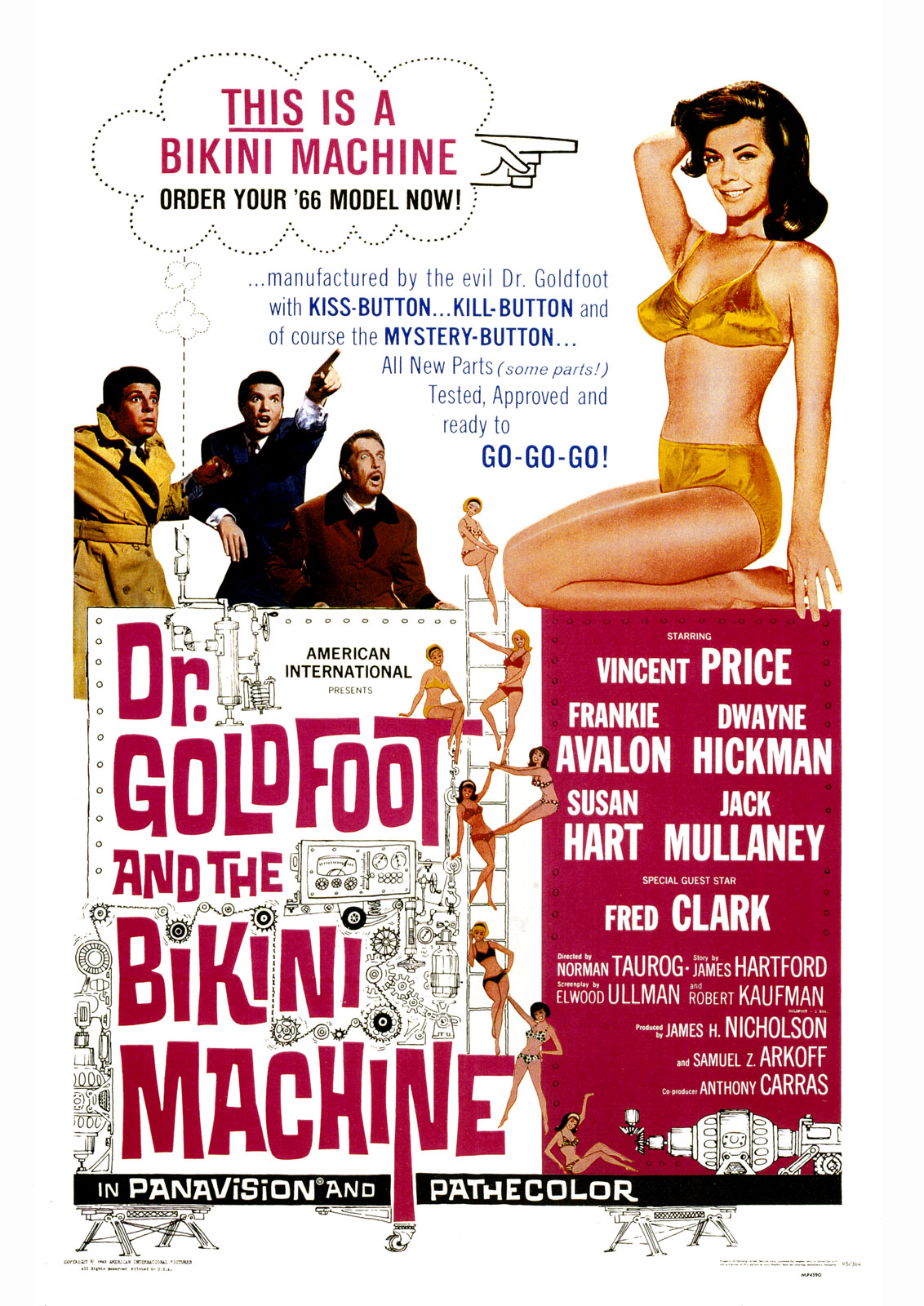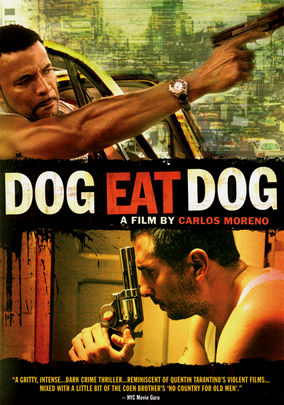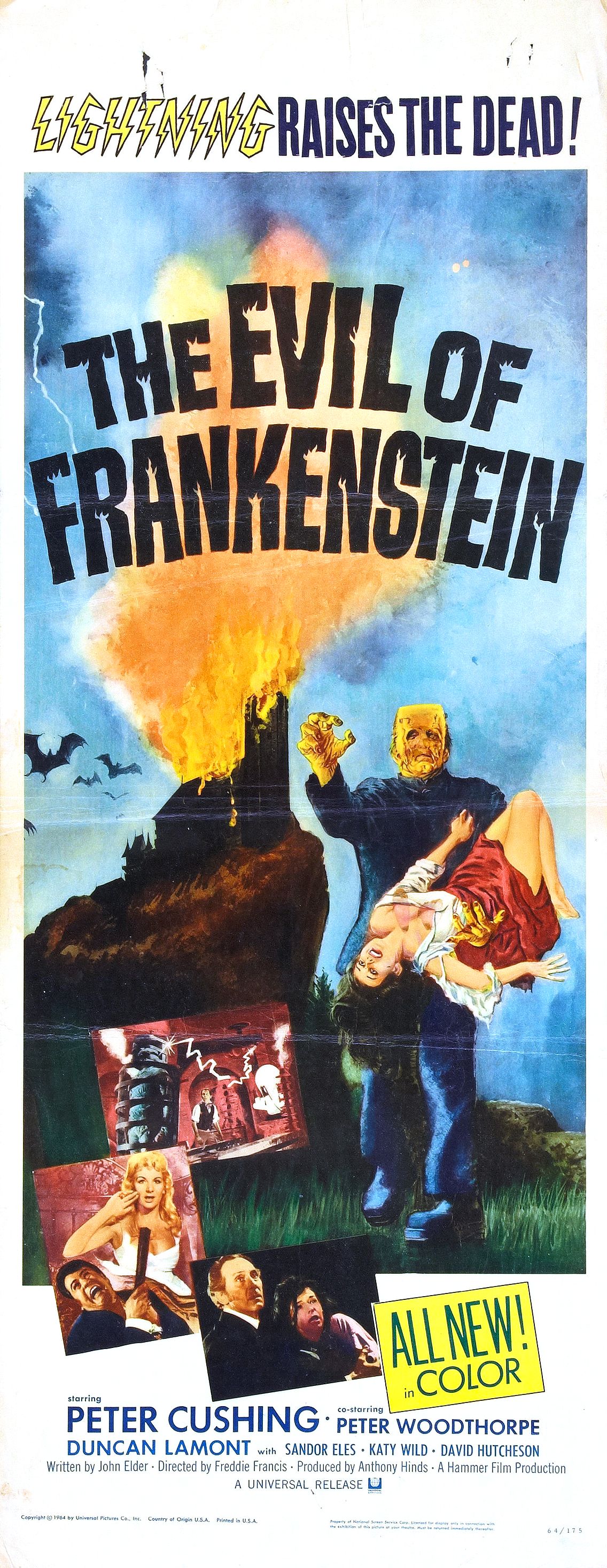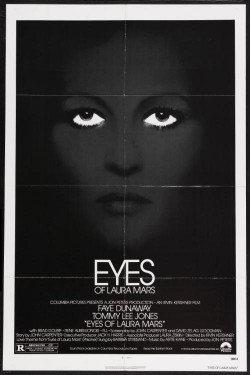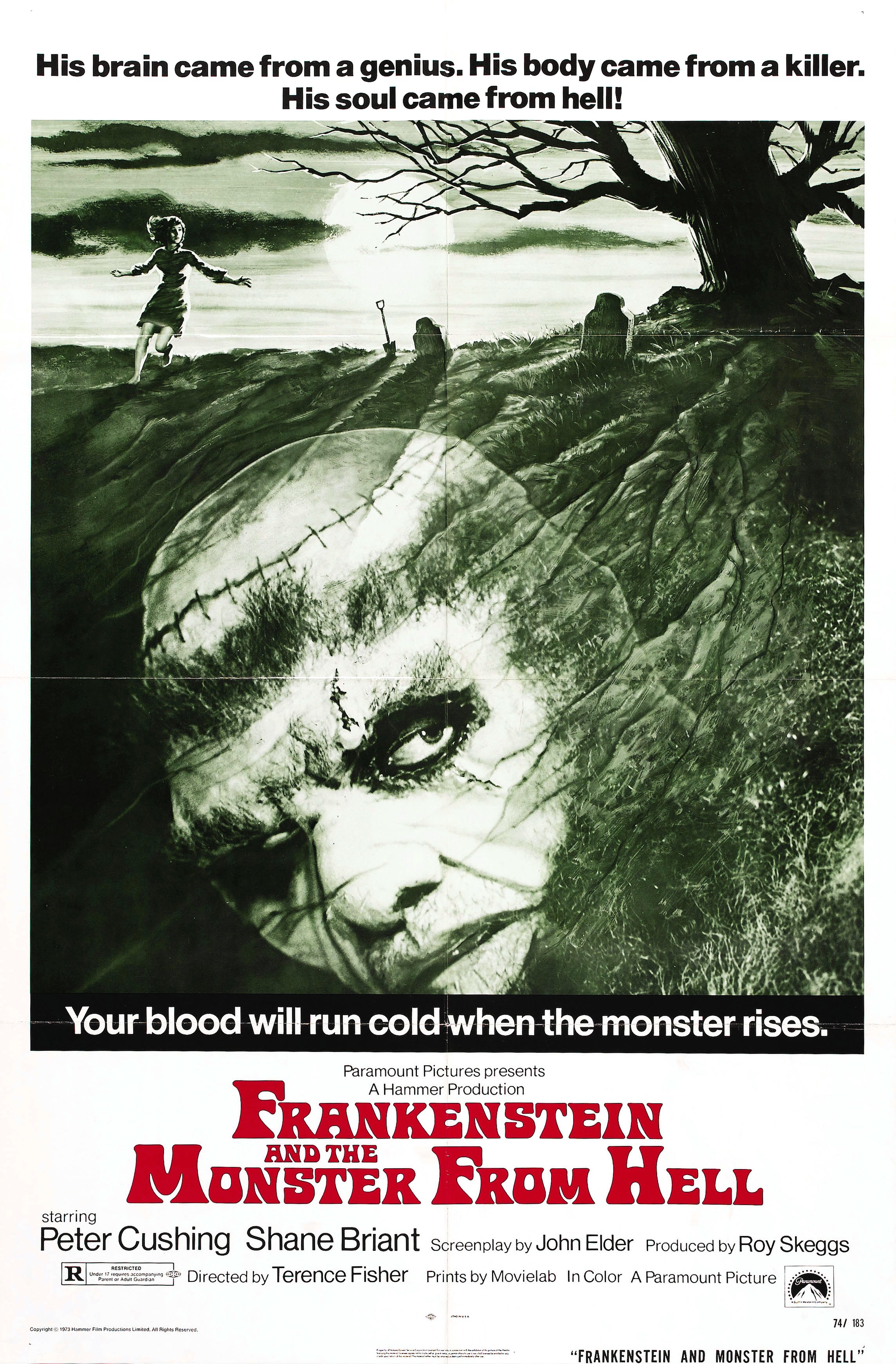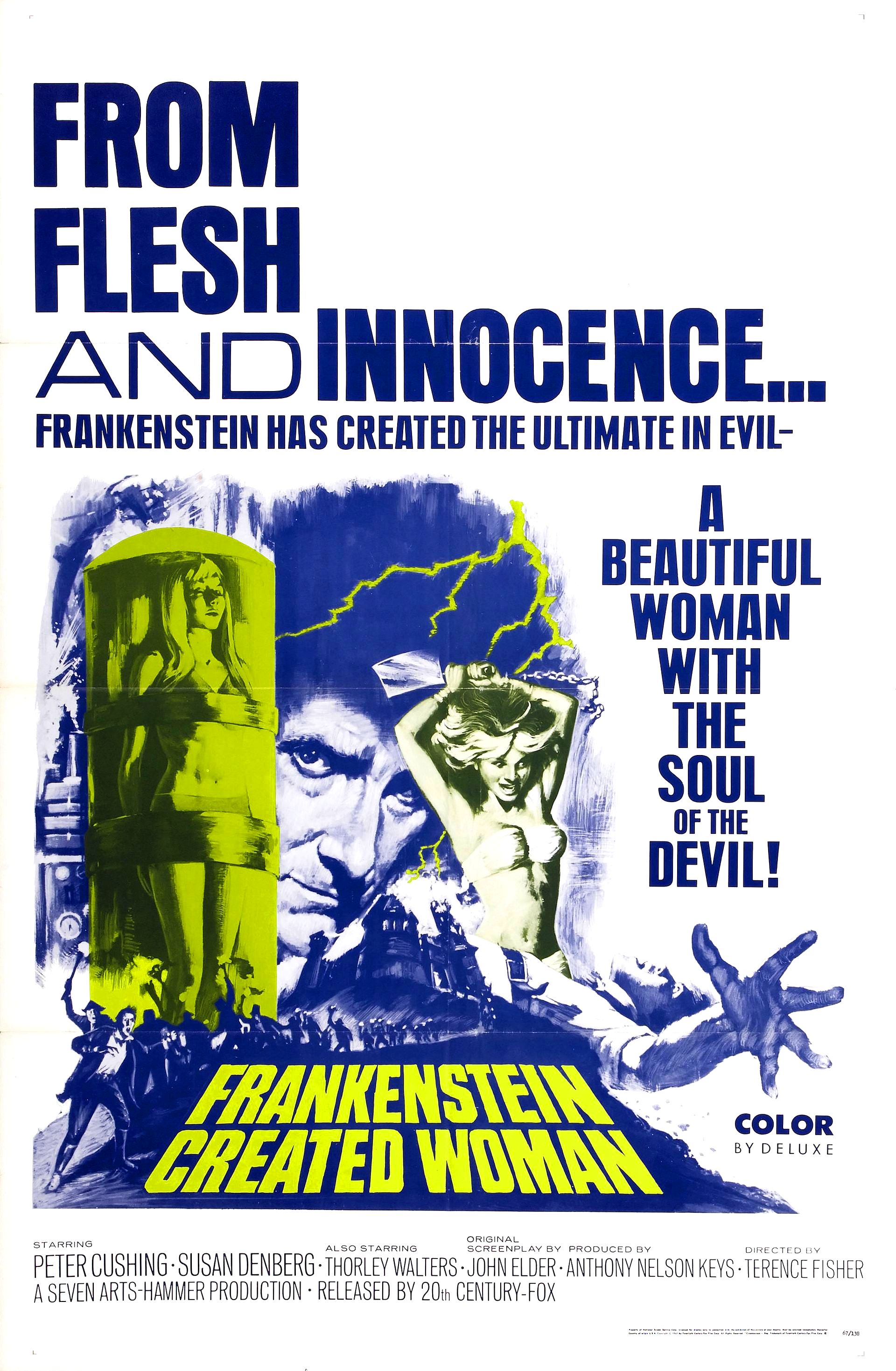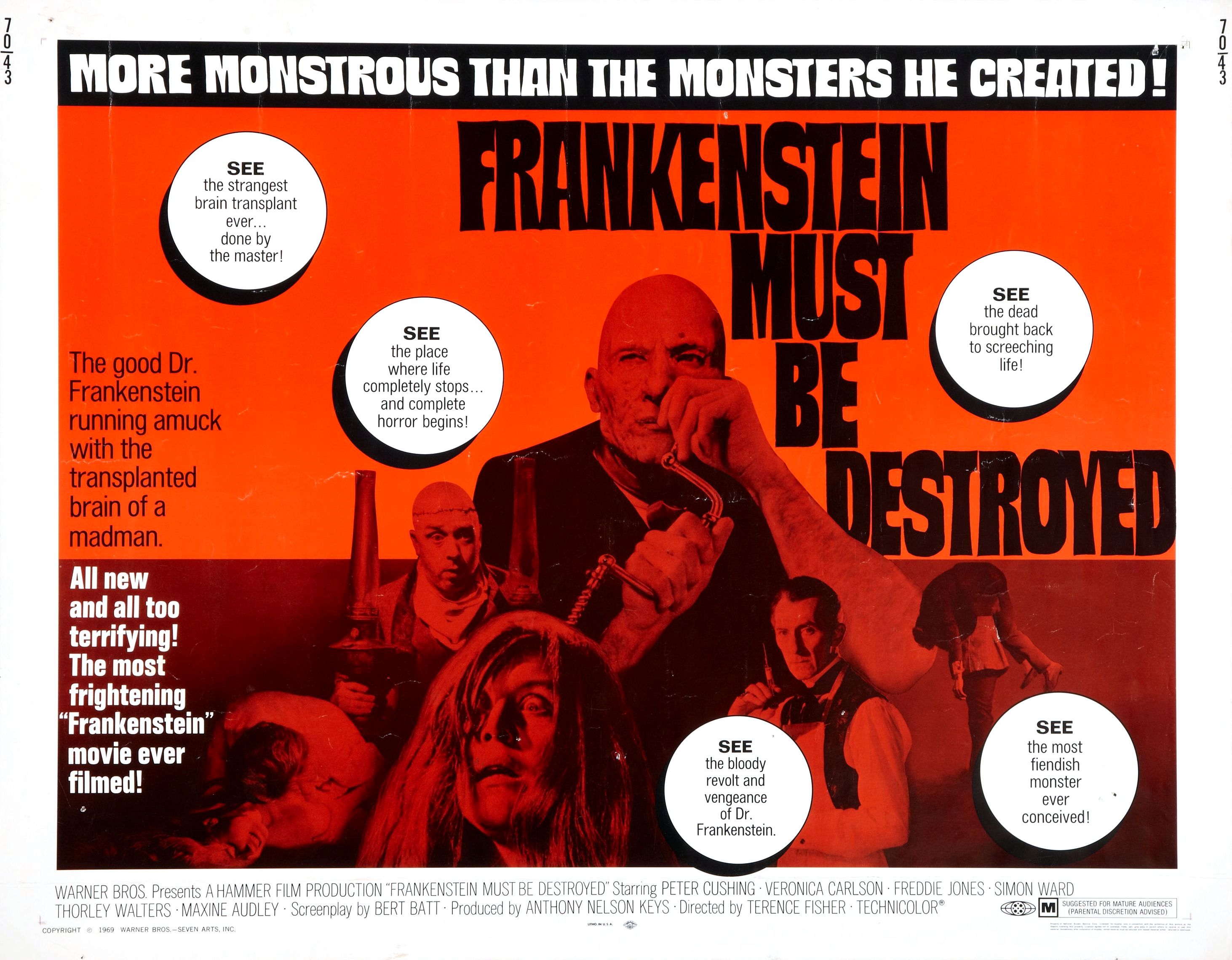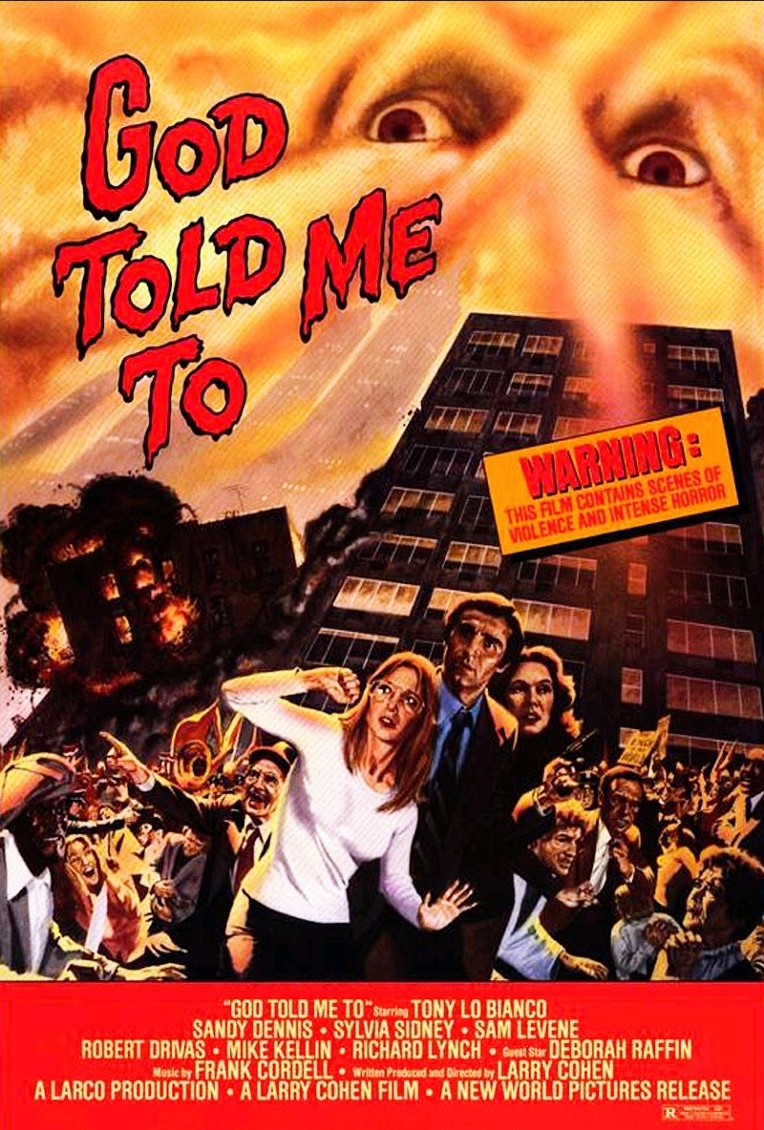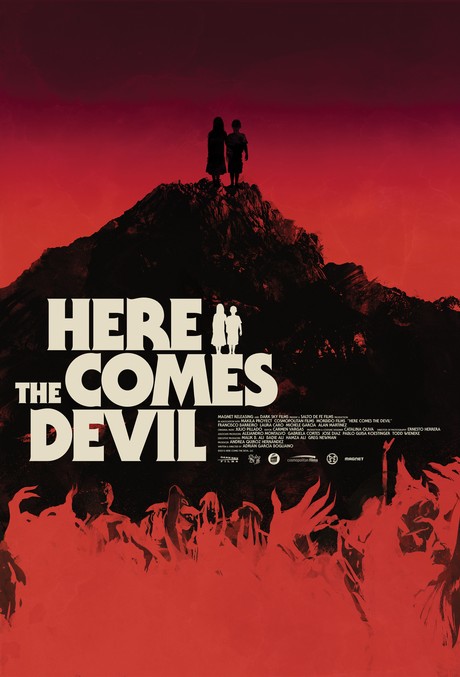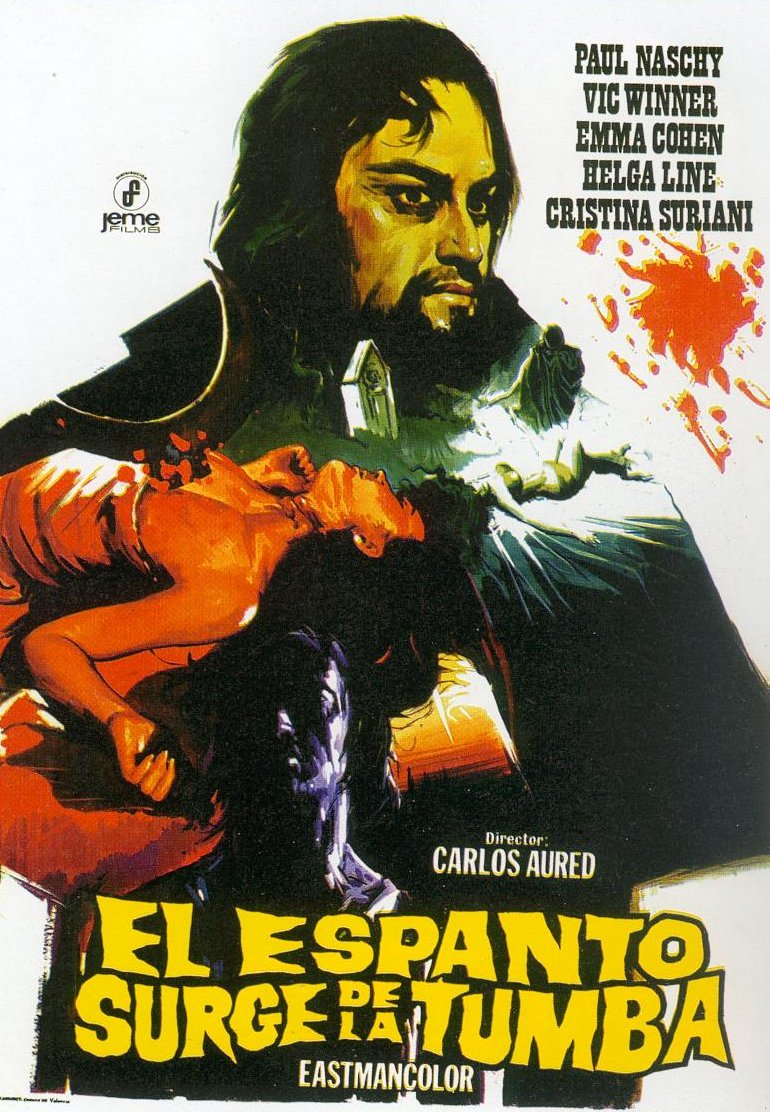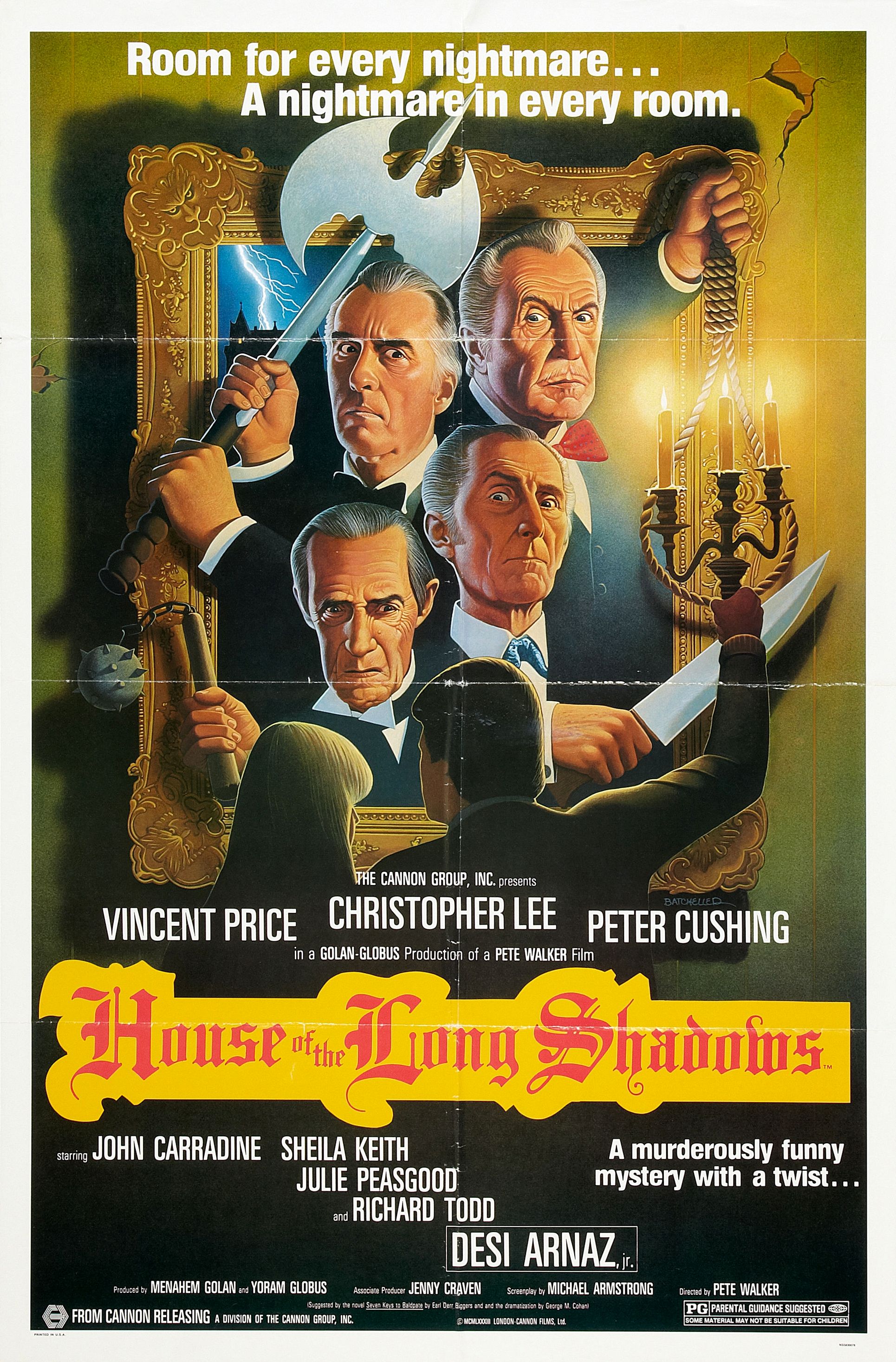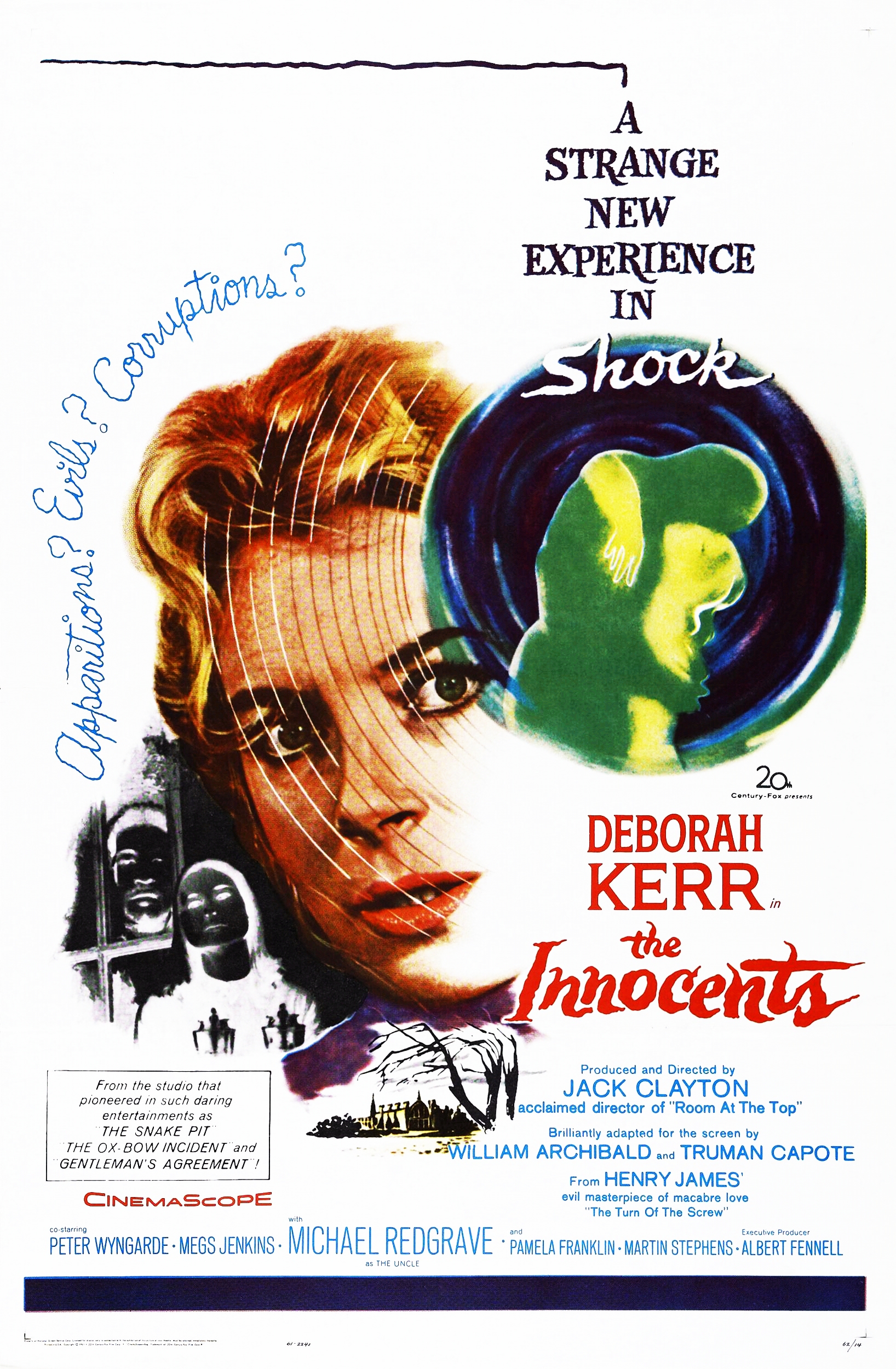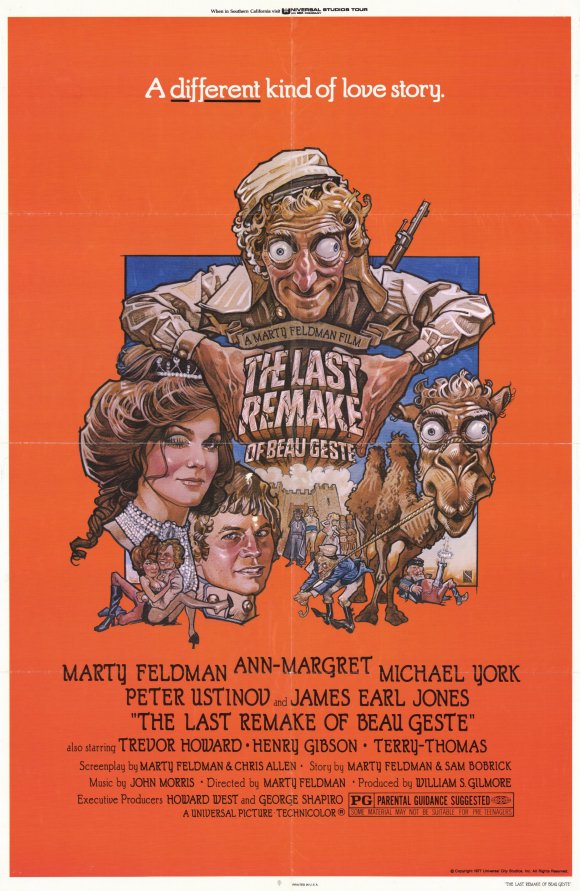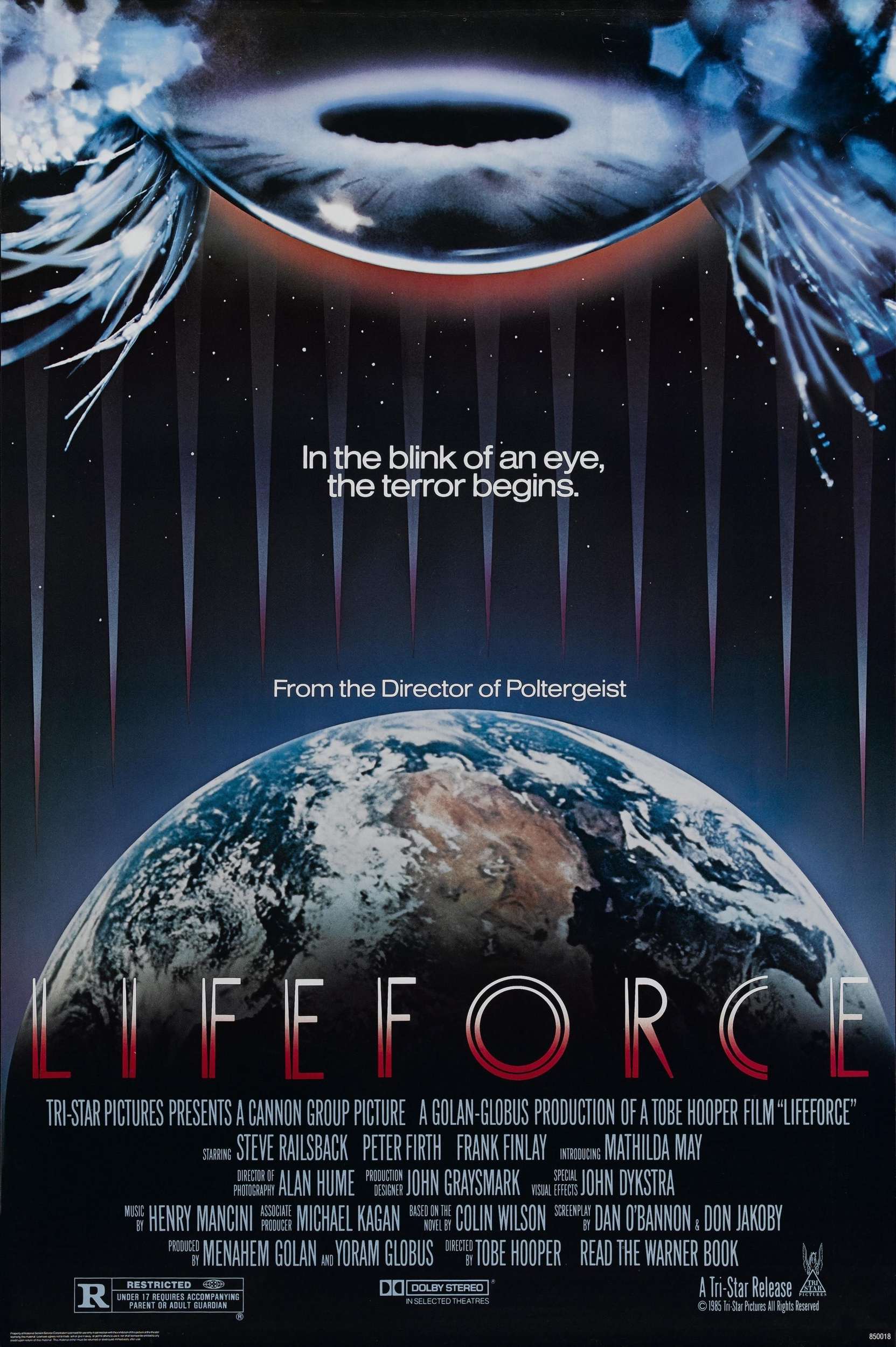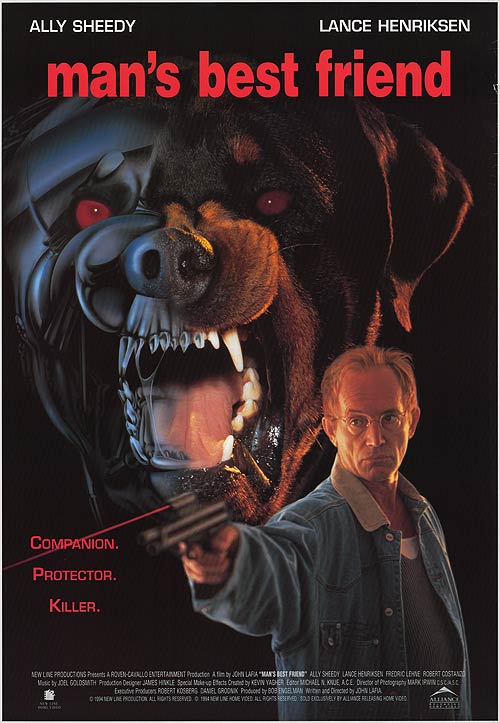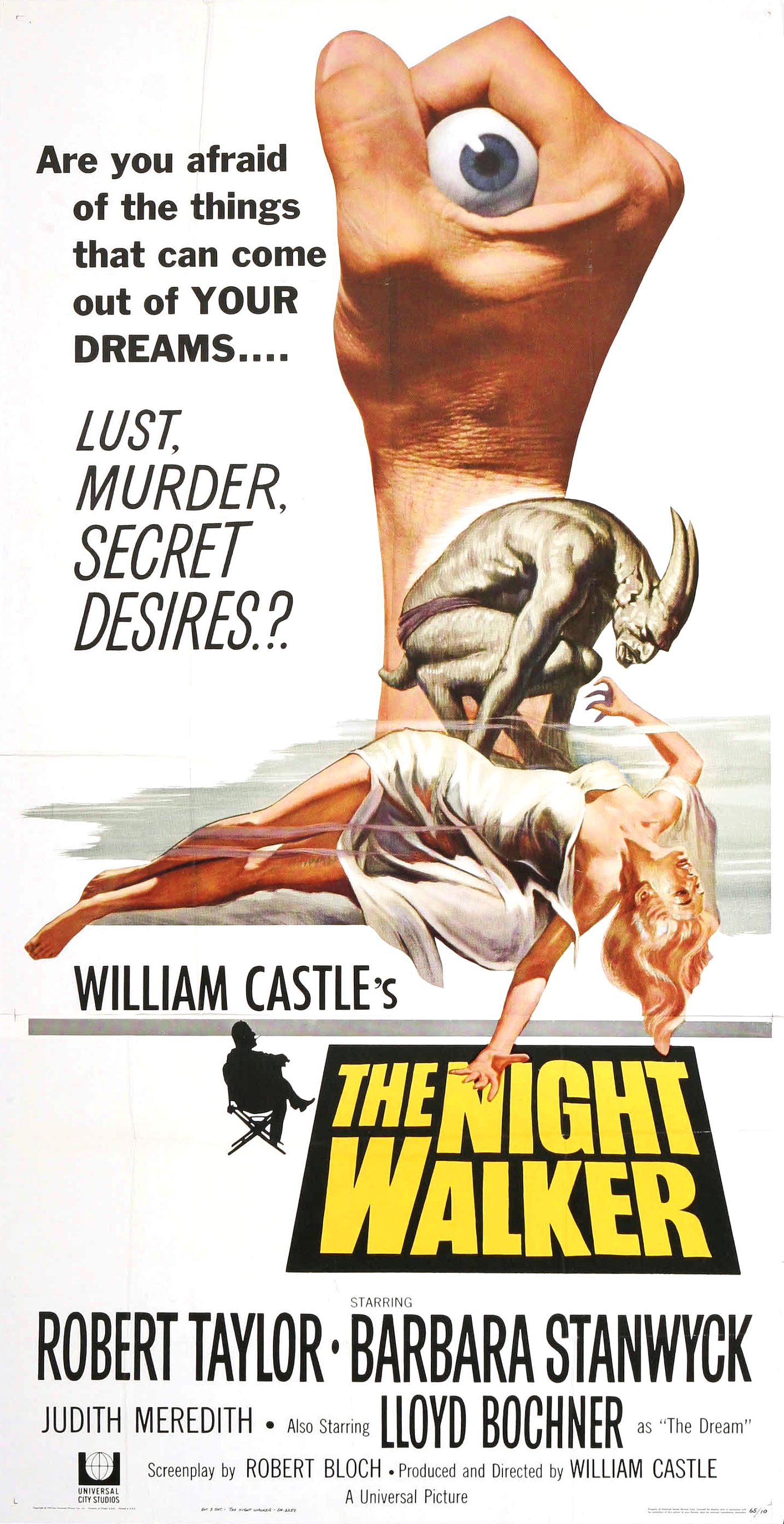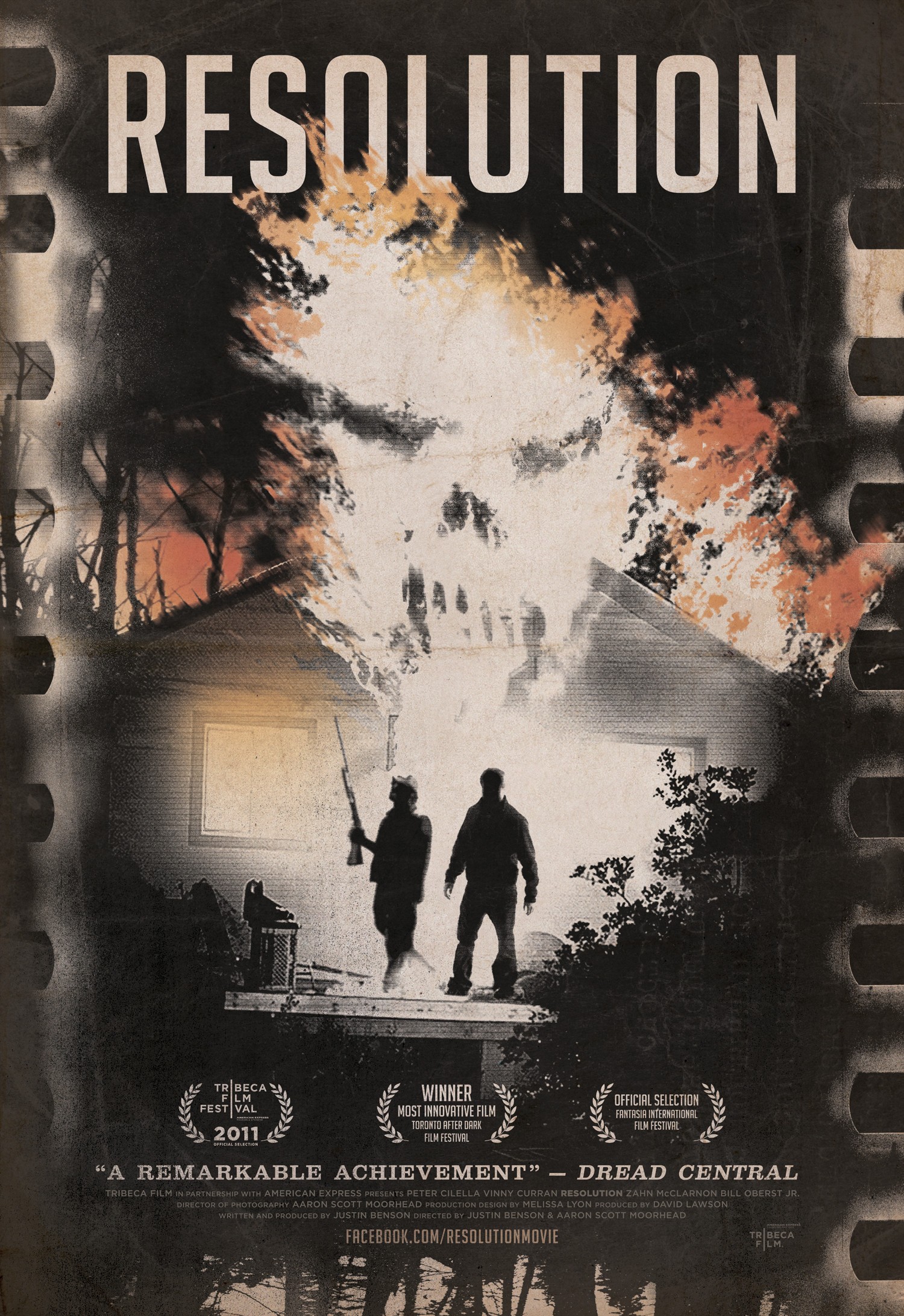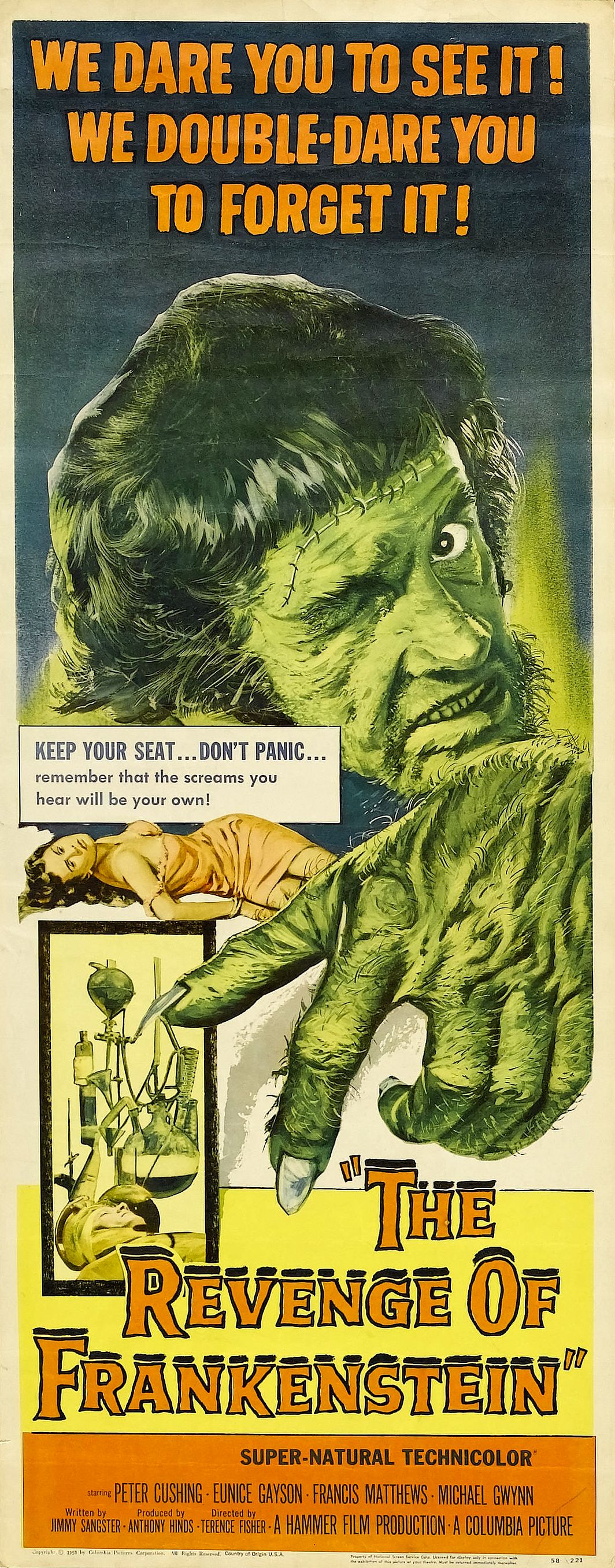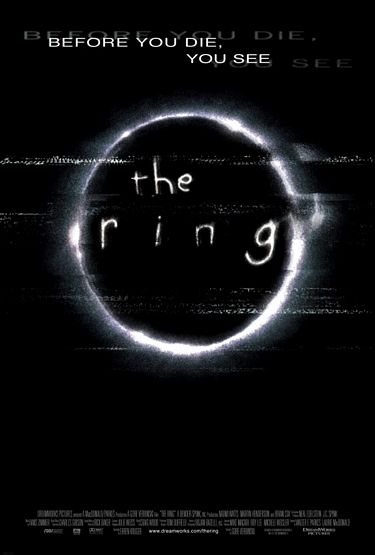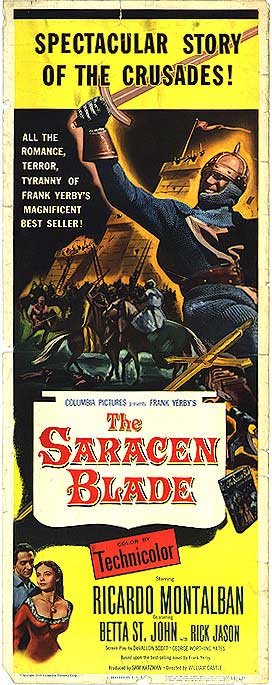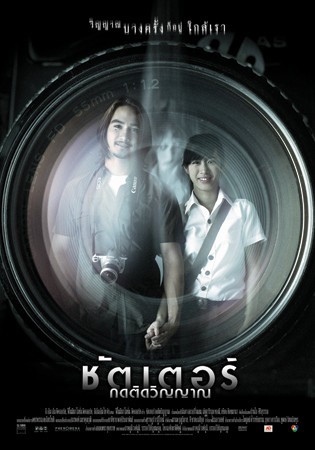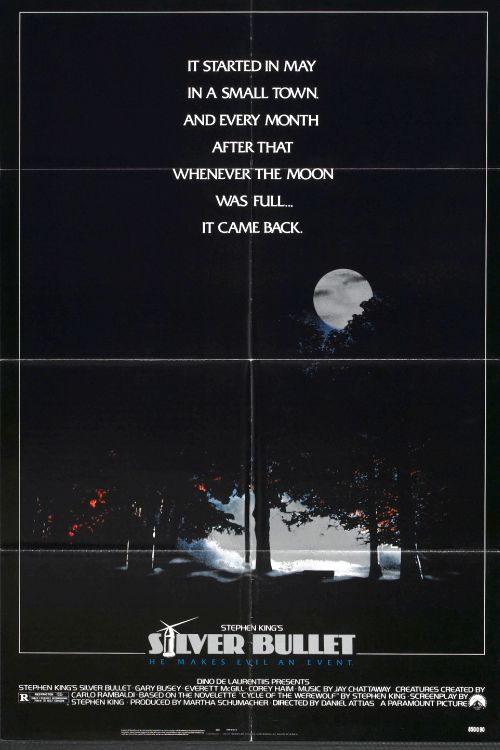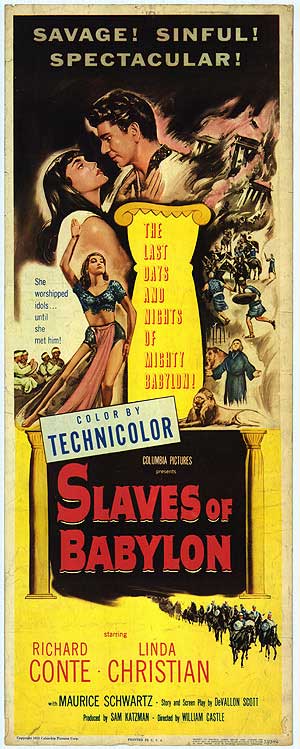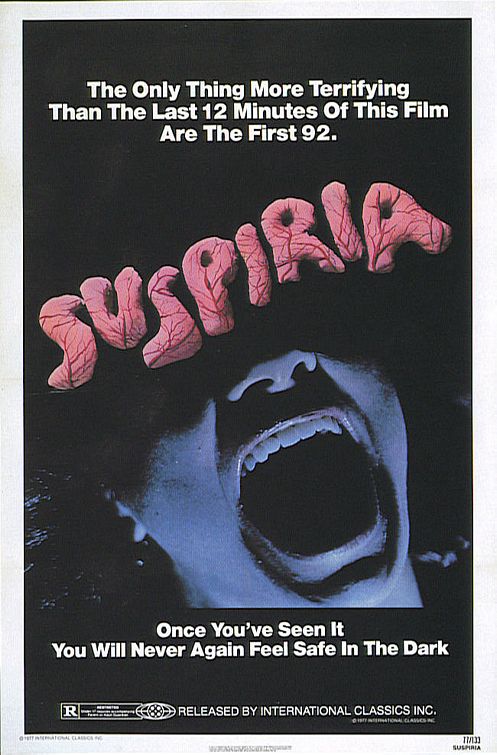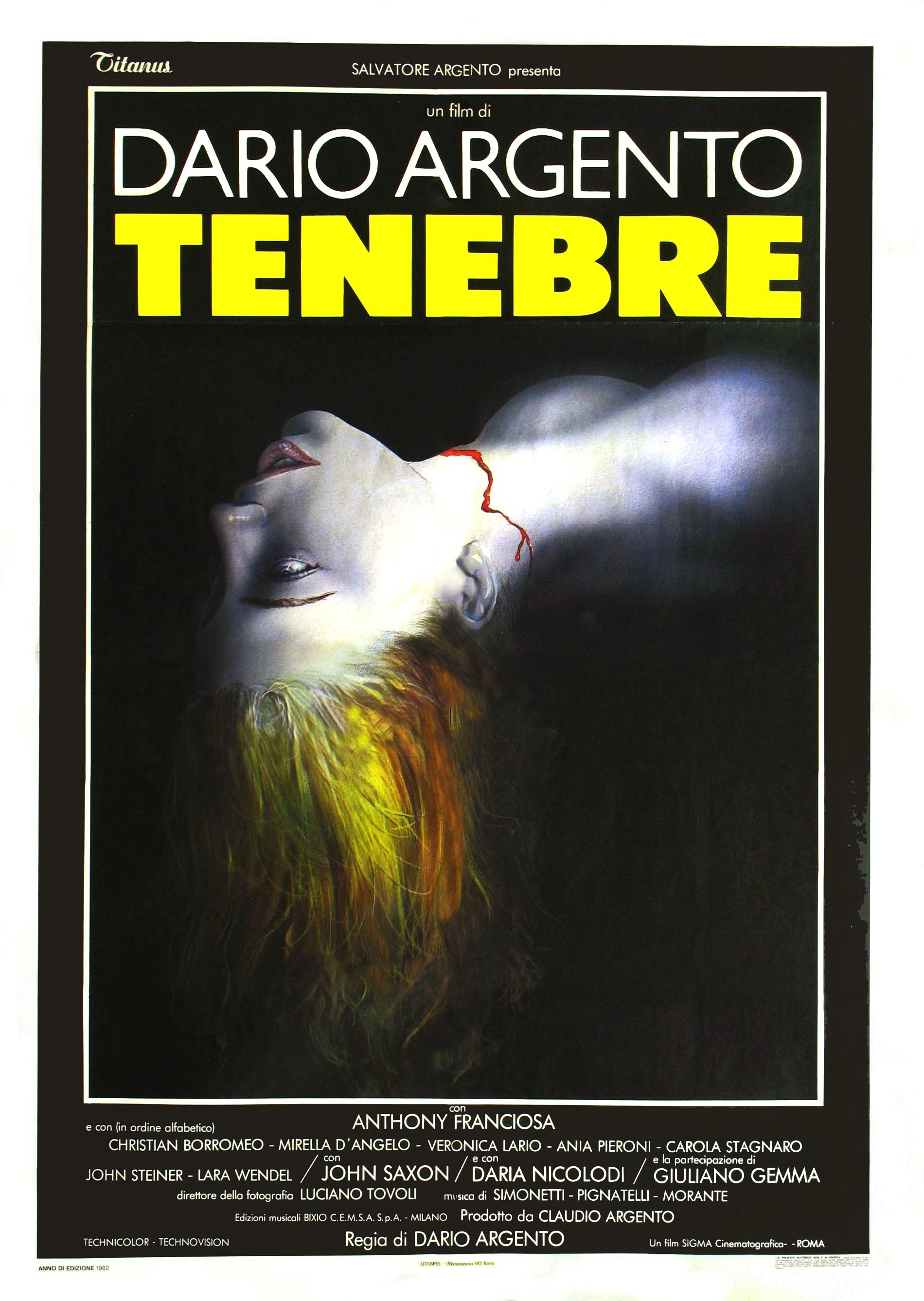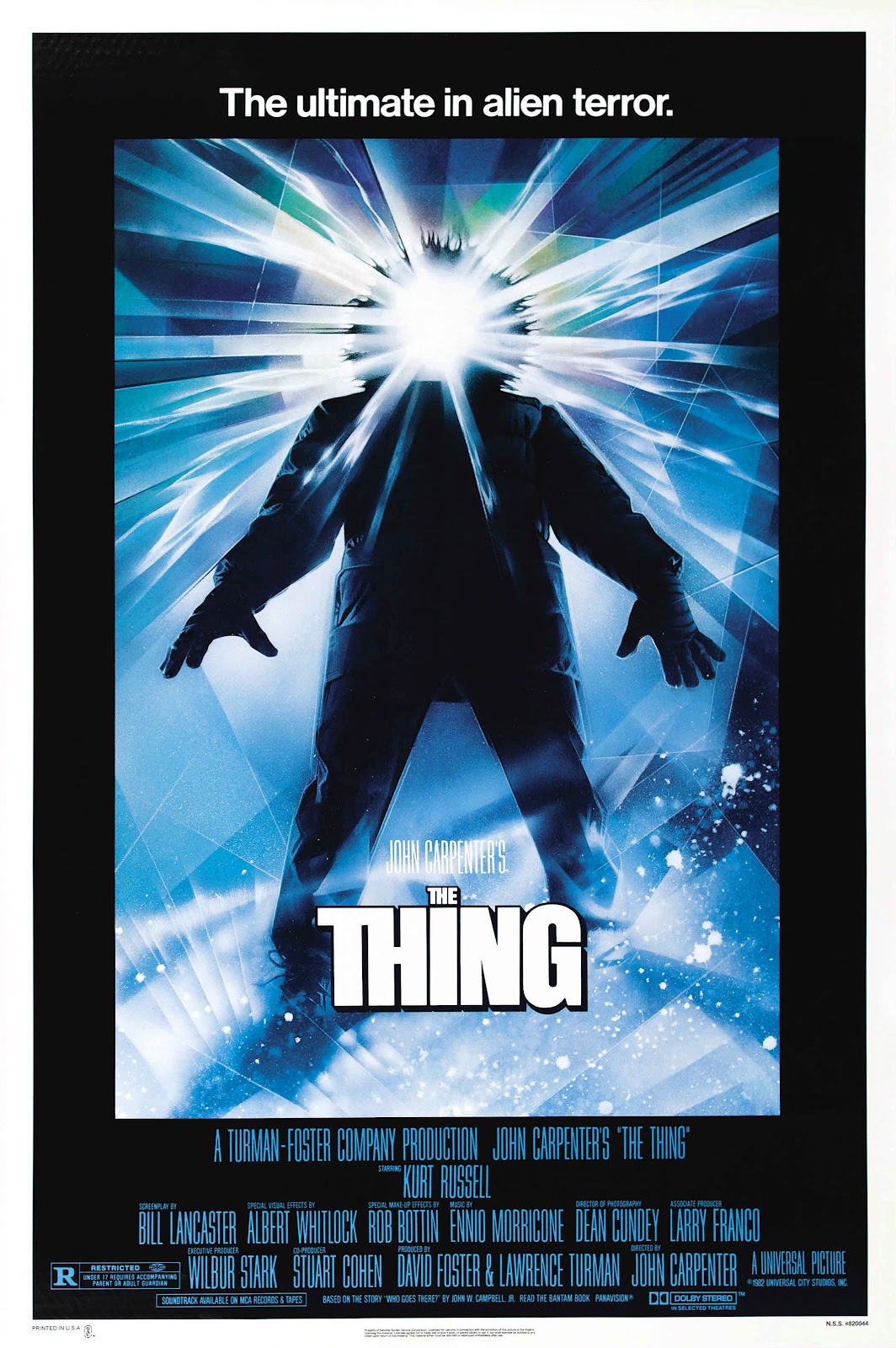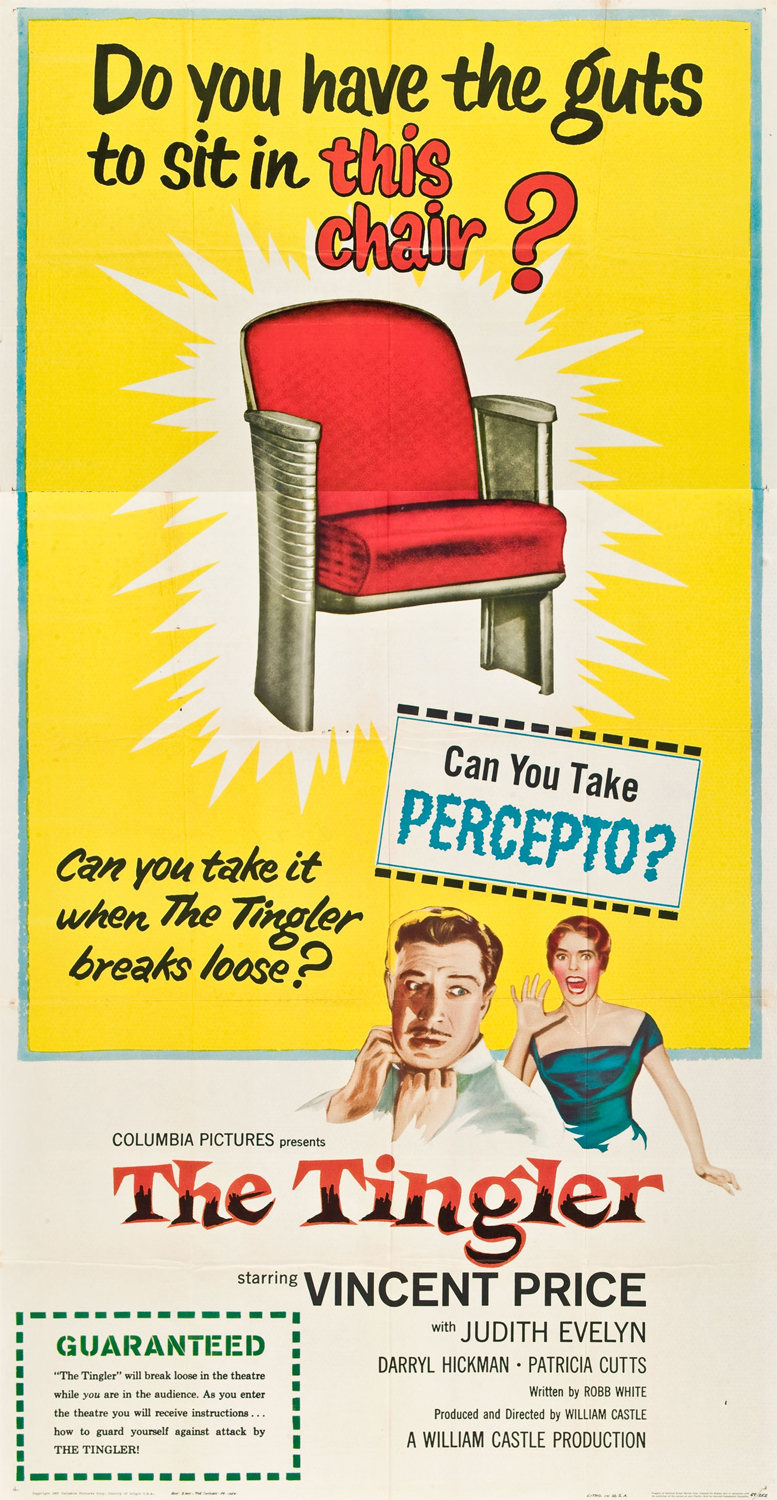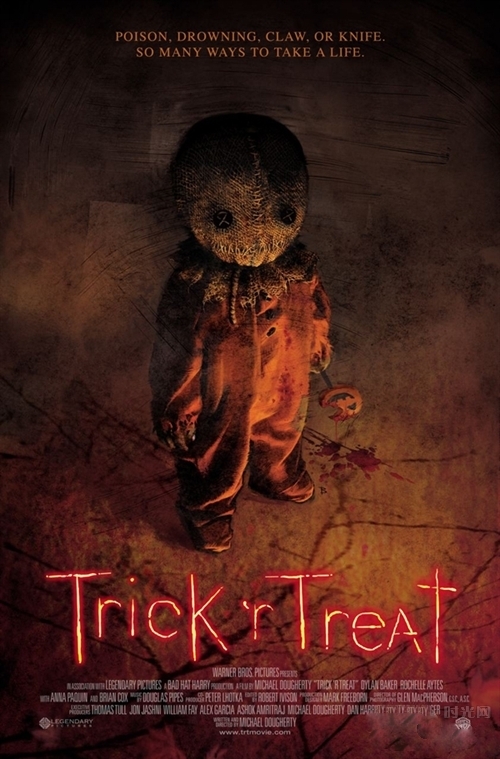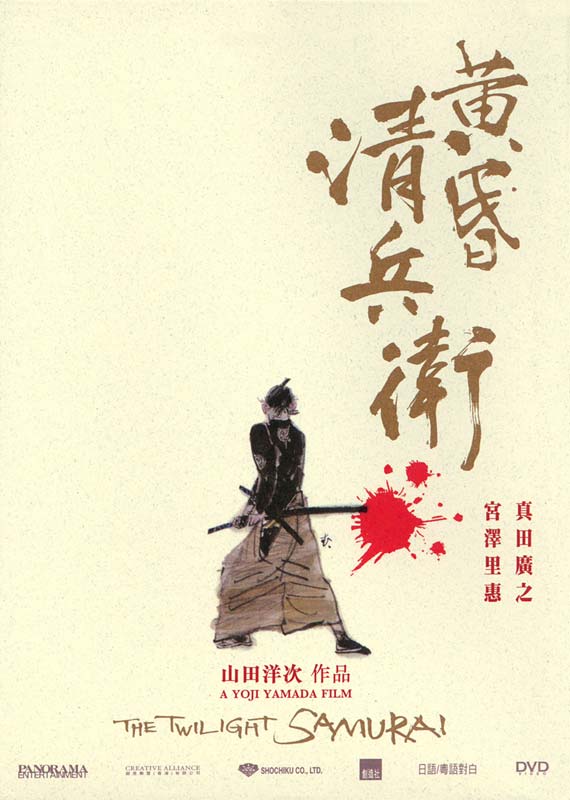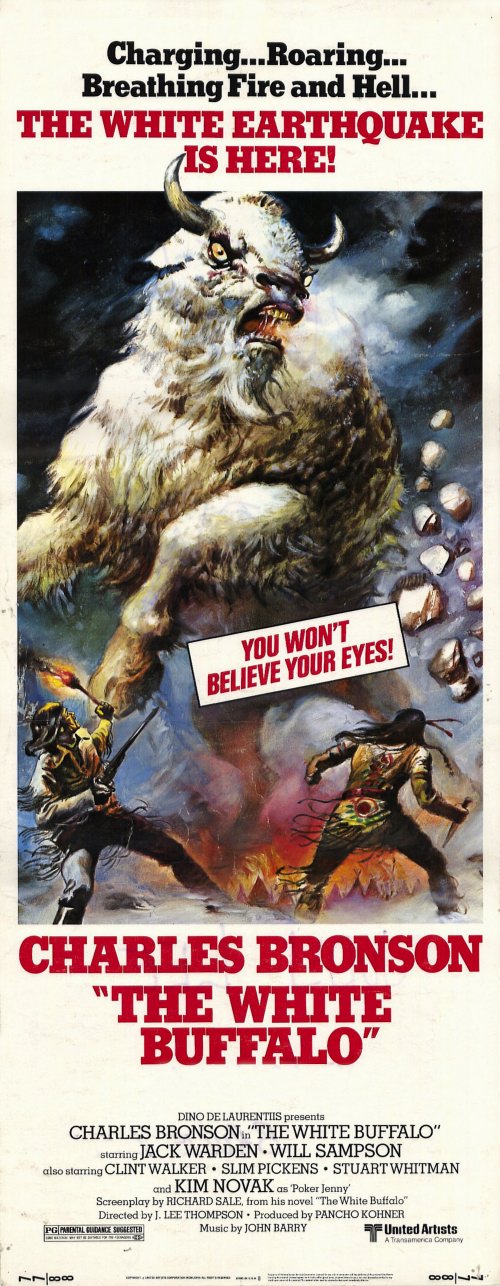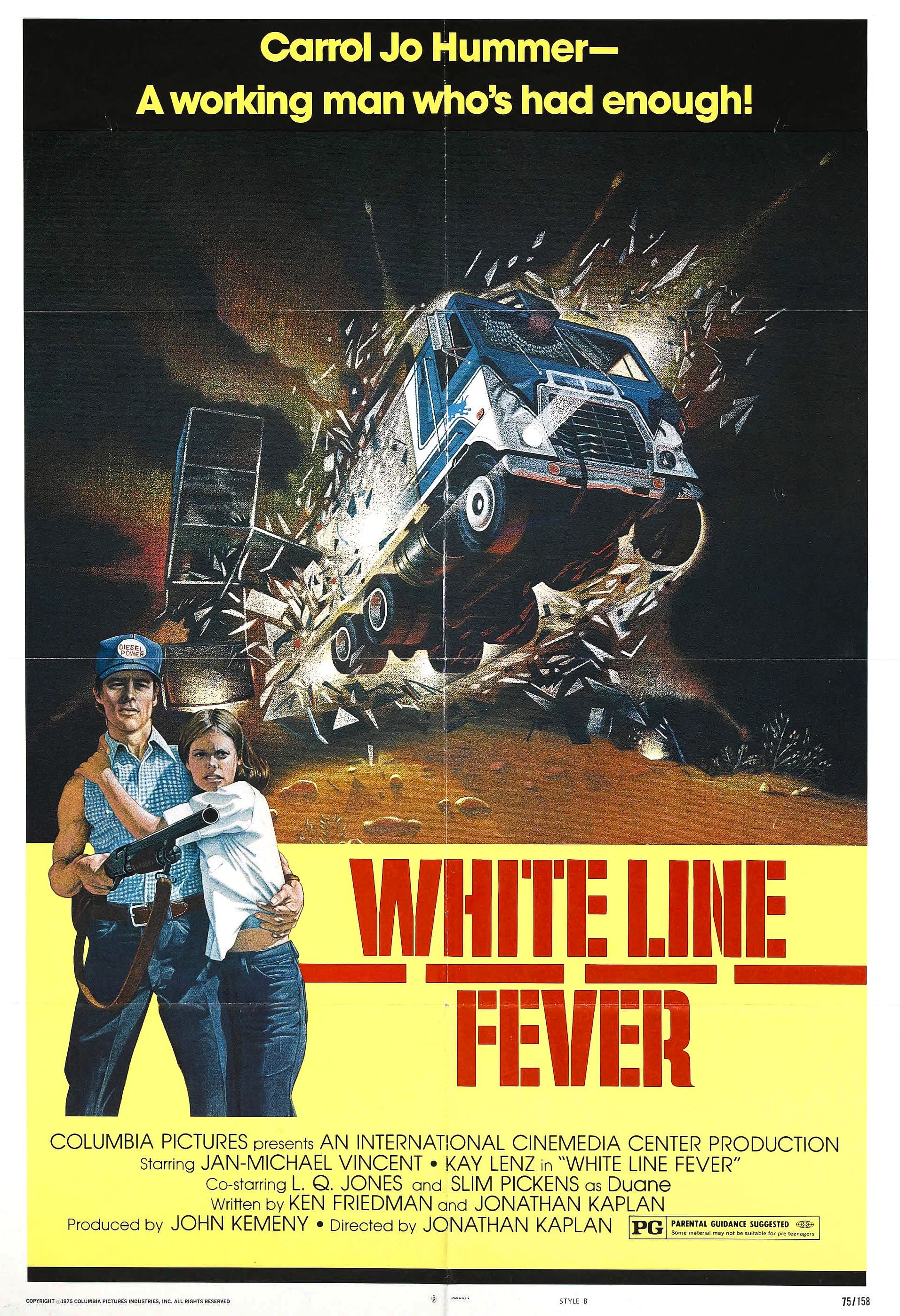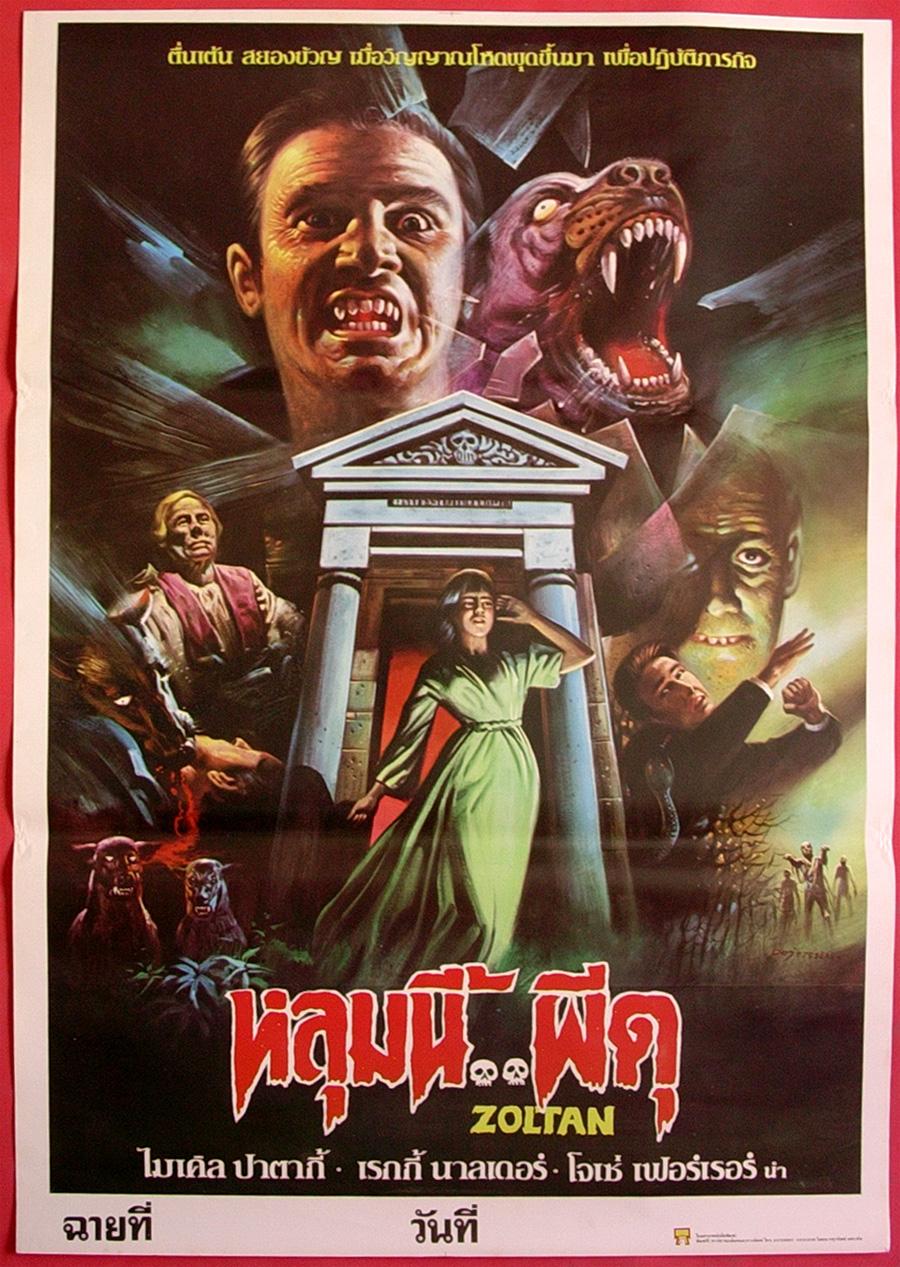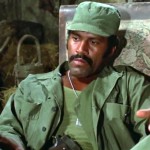
It’s Week 4 of the 2013 Italian Film Culture Blogathon hosted by the Nitrate Diva, celebrating “2013: Anno della Cultura Italiana, Year of Italian Culture”. Here at WeirdFlix, we continue our exploration of Italian war film, affectionately known as “macaroni combat”.
When you talk about macaroni combat films, one name inevitably comes up. Writer-director Enzo G. Castellari has been called “the poor man’s Peckinpah.” While he may not achieve the cynical greatness of that particular auteur, he certainly knew how to make action movies on the cheap. His crowning achievement is perhaps The Inglorious Bastards (1978), not to be confused with the similarly titled Quentin Tarantino homage. Indeed, Tarantino’s appreciation for Enzino borders on the embarrassing, but it did manage to bring Castellari’s films and the whole macaroni combat genre to the fore.
The Inglorious Bastards (1978) stars Bo Svenson, Fred “The Hammer” Williamson, Peter Hooten, Michael Pergolani, and Jackie Basehart as the titular “Bastards”, but they get some help along the way from Raimund Harmstorf, Michel Constantin, Debra Berger, and Ian Bannen. The literally hundreds of German soldiers that get shot up, blown up, knifed, and run over by a train are nameless fodder for the most part, but they do a great job of flying through the air or wiggling morbidly as they get riddled with pretend bullets.
6’4″ Swede Bo Svenson is perhaps best known for portraying real life Tennessee tough guy Buford Pusser in two Walking Tall films and an NBC television series (1981). These made him the highest paid television personality at the time, eclipsed only by Johnny Carson. A 6-year stint in the U.S. Marines gives him credibility as a soldier, and his athletic accomplishments are considerable and varied. He was a U.S. Armed Forces Far East Heavyweight Division Judo Champion in 1961, won silver in the 2009 USA Judo National Championships at the age of 68 despite suffering three broken ribs just a few days earlier, and was subsequently inducted into the Martial Arts Masters Hall of Fame later that year. He’s a licensed NASCAR driver and played in NHL Celebrity hockey games against the Chicago Blackhawks and Boston Bruins Legends teams. Admittedly, his cinematic accomplishments aren’t nearly as impressive, but he’s always gotten work and continues to perform into his 70s.
After playing in Super Bowl I and retiring from the NFL, Fred “The Hammer” Williamson starred in a string of blaxploitation films, many with titles too racially charged to list here, others alongside fellow blaxploitation icons Jim Brown and Jim Kelly. While filming The Inglorious Bastards, Fred used the equipment and crew to shoot his own movie, Mr. Mean (1977), without the producers’ knowledge. Bastards was later re-cut and rereleased as G.I. Bro to capitalize on his appeal.
Peter Hooten was primarily a television actor with the notable exception of a supporting role in the Dino de Laurentiis debacle Orca (1977). Hooten has a difficult role with the largely unlikeable loudmouth Tony. With considerably more hair and a moustache to make a porn star jealous, he would appear in the little-seen TV pilot for Marvel Comics’ Dr. Strange (1978). We’ll certainly get to that one someday.
Michael Pergolani debuts here and really shines as the thief with the long hair and impressive moustache, a kind of Italian take on the anachronistic hippy Sgt. Oddball from Kelly’s Heroes (1970). Jackie Basehart made his acting debut back in 1967 alongside his father, Richard Basehart, in the Voyage to the Bottom of the Sea television series. Though born in Santa Monica, he appeared in a number of Italian television and film productions.
Raimund Harmstorf was primarily a veteran of German television, but appeared in the Jack London adaptation of The Call of the Wild (1972) with Chuck Heston. This likely contributed to his casting in Lucio Fulci’s White Fang films. Michel Constantin appeared in one of the first Italian Dirty Dozen rip-offs, Dirty Heroes (1967). Both went on to appear in a wide variety of Italian films.
Debra Berger is the daughter of spaghetti western veteran William Berger (Ringo’s Big Night (1966), If You Meet Sartana Pray for Your Death (1968), Sabata (1969)). She appeared in three films with him, Terminal (1974), The Marvelous Visit (1974), and Parapsycho – Spectrum of Fear (1975). Though nominally the love interest here, she isn’t afraid to get her hands (and hair) dirty as French partisan Nicole.
Lastly, as Col. Charles Thomas Buckner, Ian Bannen is certainly the most celebrated actor in the cast. He was nominated for a Best Supporting Actor Oscar for The Flight of the Phoenix (1965). After Bastards, Bannen was originally slated to replace David Niven as Miller in the Alistair MacLean sequel Force 10 from Navarone (1978), but clashed with a producer and was, in turn, replaced by Edward Fox. With a long list of credits that includes such British genre stalwarts as Fright (1971), Doomwatch (1972), and From Beyond the Grave (1974), I’m sure this won’t be the last time we talk about Mr. Bannen.
The Inglorious Bastards (1978)
France 1944. Our opening shot is straight from Tarantino’s own playbook. From total darkness, a canvas covering is lifted away so that we can see out the back of a truck where military prisoners are being loaded towards our viewpoint.
Our first two “Bastards” are a nervous Berle Hayes (Jackie Basehart) and the more resigned Canfield (Fred Williamson). As one MP describes, “Hayes went AWOL and the black guy’s a killer.” Up next are Tony (Peter Hooten) and the gloriously mustachioed Nick (Michael Pergolani). Tony is our resident clown and smooth talker. A pal hurries up to lay twenty bucks at three-to-one odds that Tony avoids court martial yet again, but considers his bet lost when Tony confesses that he’s up for murder this time around. Nick is a thief and pickpocket, displaying his sleight of hand skills by lifting the watch right off the lead MP.
Last, but certainly not least, is an officer. Lt. Robert Yeager (Bo Svenson), U.S. Army Air Force, may be a great fighter pilot, but jaunting off in his plane to visit his girlfriend in London was frowned upon by his superiors. After two warnings, the third time was the charm and landed him a court martial. In his brown leather aviator’s jacket and sunglasses, Yeager is a tower of swaggering insubordination.
With our cast of misfits assembled, we get a good look at the impressive motor pool before heading out to division HQ. There are some other prisoners in the truck, but they might as well be wearing red Starfleet uniforms because those unnamed grunts are clearly doomed. While changing a tire, the truck comes under fire by a German Stuka. Canfield is the first to flee and dive into a ditch, but the MPs gun down the next two prisoners to follow his lead. During the multiple strafing runs and execution of fleeing prisoners, Canfield is able to sneak around and choke the lead MP out from behind. This gives Yeager the opening to secure a submachine gun of his own and get the MPs to surrender.
Once the “Bastards” are free of their shackles, Yeager force marches the MPs back the way they came at gunpoint. He motivates them with bullets kicking up dust at their heels. He offers the enlisteds the MPs’ jeep and takes the truck, but, since he seems to have a plan, they race to jump on board. His plan involves a run for the Swiss border, only 160 miles away. Canfield likes the idea since, “them Swiss banks have mucho dinero.”
Subsequent scenes reinforce the roles of Nick as one-man supply depot, Yeager as take-charge leader, Berle as cowardly mechanic, and Tony as a loudmouthed gambler. After a German mortar team forces them to flee their truck, they take shelter in a gutted farmstead. There, Tony, perhaps out of boredom, tries to goad Canfield into a fight using racist rhetoric. He also claims to have worked for “Big” Mike Banion back in Chicago, but that’s likely just bravado. Yeager puts an end to the shenanigans with his SMG.
As they’re planning their next move, Canfield uncovers a lurker in the hay loft. It seems Adolf Sachs (Raimund Harmstorf) was an escaped prisoner himself, only from the other side. Yeager speaks fluent German and is opposed to Tony’s idea of summary execution. Instead, he believes Sachs can guide them to the border and freedom.
While Canfield seems comfortable laying low during a German ambush, Yeager can’t help himself. Duty calls. Soon, both he and Canfield are ambushing the ambushers. All goes well as they cross the forest until they run afoul of a German convoy, complete with halftracks. The only play is to let Adolf take them prisoner. There is a surprising amount of German spoken in the film, all without subtitles, but body language and inflection make it clear what is being said, if not the exact words being used. It’s actually very well done and keeps the authenticity high in the face of over-the-top action and silly schemes.
Once separated from the majority of their foes, the “Bastards” drop the ruse and overpower their would-be captors. Adolf even tosses the Lieutenant a submachine gun, validating his status as an honorary “Bastard”. Victory is short-lived as they find themselves cheering for Allied bombers up until the bombs start dropping a little too close for comfort. The sequence ends with an impressive matte composite shot of the bombed out convoy. Our erstwhile “heroes” are forced to pick through the wreckage to find a salvageable vehicle. In doing so, they manage to score a veritable arsenal’s worth of small arms and some German uniforms.
Tasked with forging some paperwork, Nick invents correction fluid seven years early, but, given his reputation, it’s easy to see why he would be unable to take credit. Both the paperwork and uniforms are insufficient to get past the first checkpoint, especially once the Germans get a glimpse of Canfield, but the rearmed “Bastards” shoot their way out with ease.
Stopping at a river to wash and rest, Nick is astonished and overjoyed to see some German girls skinny-dipping. Keeping up their charade as German soldiers, the boys frolic in the spray until Canfield blows their cover. The girls prove to be heavily-armed, and send the would-be Casanovas packing under a hail of submachine gun fire.
While the “Bastards” hide under a bridge like a band of trolls, their truck out of fuel, Canfield spies a truck with seven Germans on the other side. Adolf asks to be allowed to parlay with them to hopefully get refueled. Tony warns Yeager against trusting the German deserter.
Once Adolf converses with the seven, he turns and shouts “Americans! Americans!” It’s deliberately vague who opens fire first, but it’s crystal clear that Adolf is the first to get gunned down. The ensuing firefight leaves all seven dead, along with Adolf, and Berle injured. Tony is smug in his “I-told-you-so” attitude.
As the gang rests and tends to the wounded Berle, they find themselves surrounded by the French Resistance. The armed partisans ask for Lt. Sykes, so the “Bastards” all point to a confused Yeager, who plays along and meets with their leader, Veronique (Michel Constantin).
Veronique thinks their mission was suicide with seven, but will be nearly impossible with only five, especially since one of them is clearly black. Yeager is still at a loss. Tony soon figures out that they made a horrible mistake and killed their own men. Adolf wasn’t ratting them out, he was trying to tell them the Germans were also disguised Americans, a misunderstanding Adolf paid for with his life.
Berle is shown to Nicole (Debra Berger), the closest they have to a proper nurse. Believing him to have volunteered for Sykes’ mission, she thinks he must be very brave. He’s immediately smitten with the young lass. When Tony starts harassing Berle about her, Canfield takes a very physical exception. Once again, their altercation is interrupted by Yeager, who explains that their assumed mission is to attack a train.
Tony feigns injury to get some quality time with Nicole. He proves to have the gift of gab when he wants to, and sweet talks her into sympathy, but not much more before Col. Buckner’s arrival is imminent. Bonfires are lit, and Buckner makes a hell of an entrance via late night parachute drop.
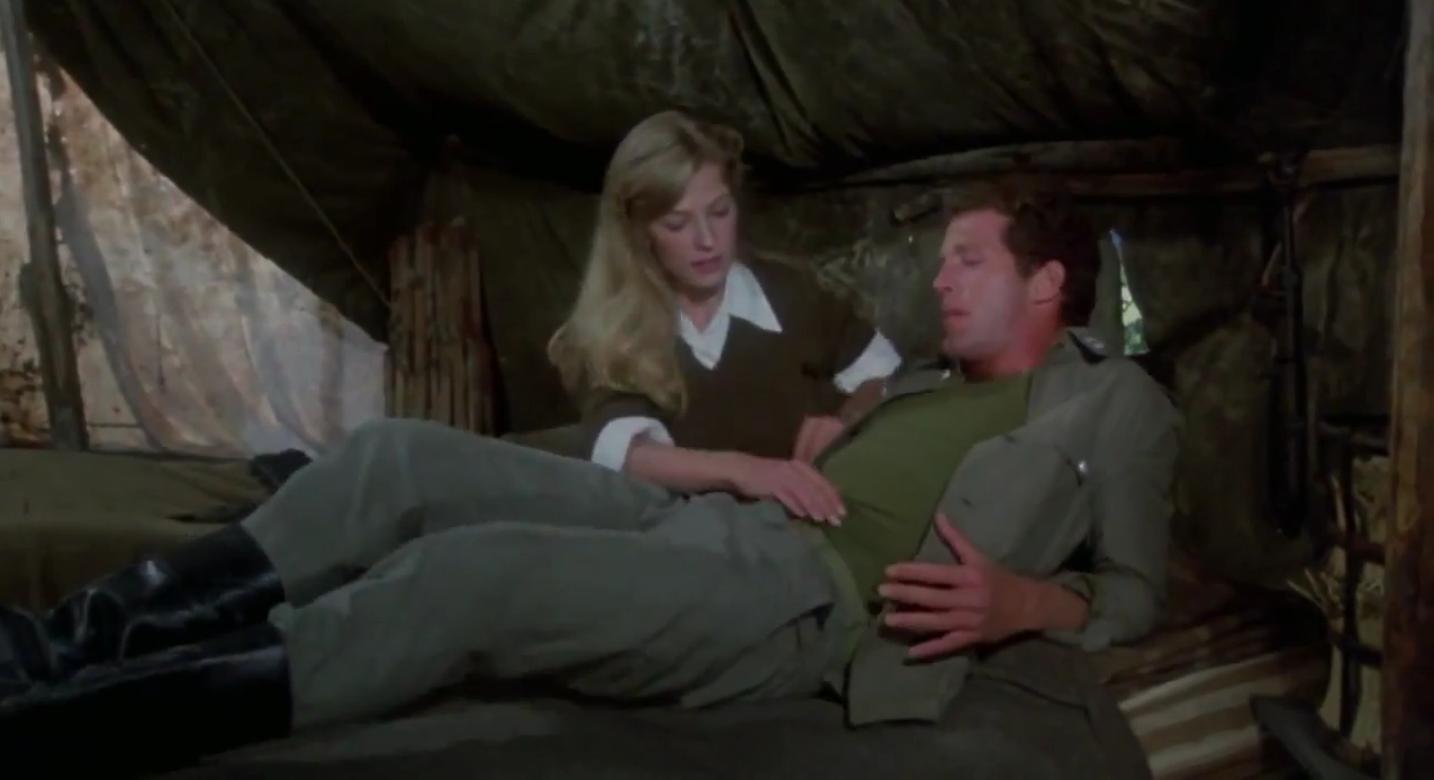
Tony (Peter Hooten) benefits from the healing hands of
Nicole (Debra Berger) in The Inglorious Bastards (1978)
Col. Buckner can tell immediately that the Lt. Sykes he’s supposed to rendezvous with is not the blonde giant standing in the glare of headlights. Yeager gets the Colonel to keep his cover, drawing him off to parlay off-camera. By the time the story thus far is told, it’s the next morning, and Buckner is beside himself with anger.
The Colonel is unimpressed with the “Bastards” before him, but Berle offers that his brother was a railroad man and he can run a locomotive. Yeager offers that he can speak fluent German and his men have proven themselves in combat. When Buckner promises a firing squad for all of them, Yeager pulls a pistol and tells him about the promise he made to the “Bastards”, to get them to Switzerland.
Yeager sets out to raid an SS Command Post in a nearby castle for a working truck with Canfield and Buckner playing prisoners. The sequence, though picturesque, is primarily played for laughs and without gunfire since the Italian government had suddenly banned all firearms on set, even those that fired only blanks. What few prop guns are used in the castle raid are never fired. Instead, the “Bastards” use a slingshot, a halberd, a dagger, and a crossbow to effect their plan. With the tone of the other related hijinks, it makes for a surprisingly fun and lighthearted diversion.
a gang of deserters… cutthroats… and thieves?”
Once the truck is secured and the SS Command Post disabled, Buckner is clearly impressed. Briefing the team on their mission, he explains the main objective is a rail car laboratory carrying a prototype of the new V-2 rocket warhead. The aim of the mission is to capture the gyroscope in the rocket’s guidance system. Buckner and Yeager will disguise themselves as rocket experts and smuggle the device off the train.
Berle and Tony will blow a bridge on the train’s route, forcing it to back up and shunt down a side line. When the train has stopped to reverse direction, they will board the train and uncouple the armored car carrying the escort. Canfield and Veronique’s partisans will attack the train and drive it towards the Allied lines.
Nick inquires about his role in the operation. Aside from forging a stack of documents, he’ll be in charge of signalling to Rene that the train has been successfully boarded by Buckner and Yeager, or else Rene will blow the bridge with the train on it.
At high noon, the partisans intercept the command car carrying the two rocket experts. Nick uses it to drive Buckner and Yeager, in disguise, to the rail yard to board the train. Nick watches with glee as his forged papers pass muster. He sets out to covertly signal Rene, but the car’s door is knocked shut, breaking the radio.
Nick is forced to steal a motorcycle and race to the bridge in advance of the train to keep it from being blown up with Buckner and Yeager on board. Meanwhile, Tony, Berle, and Rene all wait at the river bank, trying desperately to hail Nick on the radio while preparing for the worst. Jumping a machine gun nest, Nick’s motorcycle takes a round in the gas tank, but the Macaroni MacGyver seals it up with a comically large wad of chewing gum.
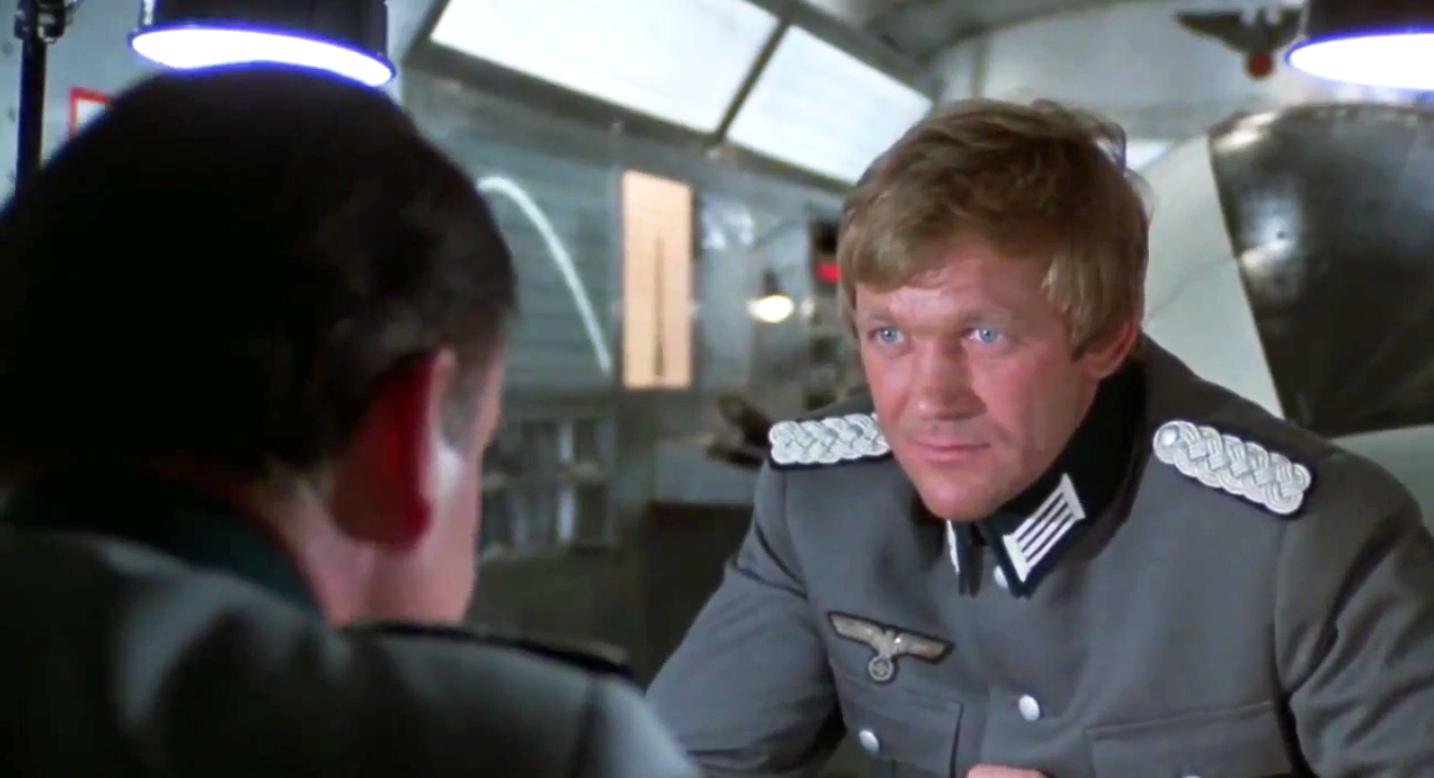
Col. Buckner (Ian Bannen) and Lt. Yeager (Bo Svenson)
bide their time in The Inglorious Bastards (1978)
Looking over the blueprints in the mobile laboratory, Col. Buckner identifies a self-destruct mechanism that will blow the whole rocket and take the lab with it. When the door to the lab unlocks, Yeager creeps in and takes out the remaining rocket scientists.
Within sight of the bridge, Nick runs afoul of a patrol and is shot down. He still manages to crawl his way to the bridge and, with his dying breaths, gives the word to blow the bridge according to plan. As expected, the train stops, and the armed escort gets off to address the situation. During the onslaught, Berle and Tony sneak onto the train and take command of the engine. Tony uncouples the escort car while the Colonel starts dismantling the warhead.
At Pont Mossons, Nicole, Veronique, Canfield, and the rest of the partisans take over the depot. They are soon met with an unpleasant surprise, however. The next locomotive to arrive is not the one they expected with the mobile laboratory attached, but a whole new train full of German reinforcements. Some dismount to retake the station, with Veronique getting a live “potato masher” grenade dropped at his feet.
The rest keep on rollin’, with Canfield and Nicole in pursuit. They split up, and things start happening very quickly like a cinematic runaway train. Berle gets shot in the back while feeding the engine, but finally musters the courage to turn and fire back. Finding him already dead, Tony jumps from the roof of the train onto a signal tower to escape. Buckner gets the gyroscope out, but accidentally activates the self-destruct mechanism. Yeager blocks the trigger with a pencil. Canfield reaches an overpass and drops down onto the train.
He reaches Yeager and warns him about the Germans waiting at the station just before getting shot up by a guard. After eliminating the threat, Yeager checks on Canfield and throws him off the train. “See you in Switzerland!” he shouts.
After bidding farewell to Yeager, Buckner jumps off the train with the gyroscope. Yeager is en route to blow up the rocket when he is shot in the back by a German hiding under a desk. As the Germans lurk in ambush at Pont Mossons, Yeager pulls the pencil free and blows up the train. It derails and crashes through the station in spectacular fashion. The ensuing HO scale destruction is a far cry from John Frankenheimer’s The Train (1964). Still, there’s some cool shots of German soldiers running around on fire, and the music gets suitably dramatic to make the big finish satisfying, if admittedly silly-looking.
Nicole catches up to Tony amidst the flames to give us our supposed happy ending. Despite the romantic musical cues and his heroic actions, I can’t be won over. He’s a jerk. More appropriately, I guess, he’s a real “Bastard”. Roll credits.
In all, a super fun time. The film is no Saving Private Ryan (1998) and certainly not meant for WWII purists, but in the vein of war comics like Sgt. Fury and his Howling Commandos, there’s worse ways to spend 99 minutes. Some day, I’ll probably take a look at Enzo’s other big macaroni combat epic, Eagles Over London (1969), but first, we’re going to see how macaroni combat changed with the times. The 1980s were the era of Rambo and rampant historical revisionism, and Italian genre film wasn’t going to let low-budget American actioners have all the fun. Warbus (1985) will be rolling into this blog real soon. Don’t miss it.
Also, be sure to click on the poncho above to explore some of the other entries in the 2013 Italian Film Culture Blogathon hosted by the Nitrate Diva. There’s some great work being done to honor “2013: Anno della Cultura Italiana, Year of Italian Culture”.


